ROG Pelta headset offers versatile connectivity, rich audio, and long battery life for gamers, with comfort and performance across multiple platforms.
The post ROG Pelta Headset: Versatile Audio for All Gamers first appeared on Trendy Gadget.
ROG Pelta headset offers versatile connectivity, rich audio, and long battery life for gamers, with comfort and performance across multiple platforms.
The post ROG Pelta Headset: Versatile Audio for All Gamers first appeared on Trendy Gadget.
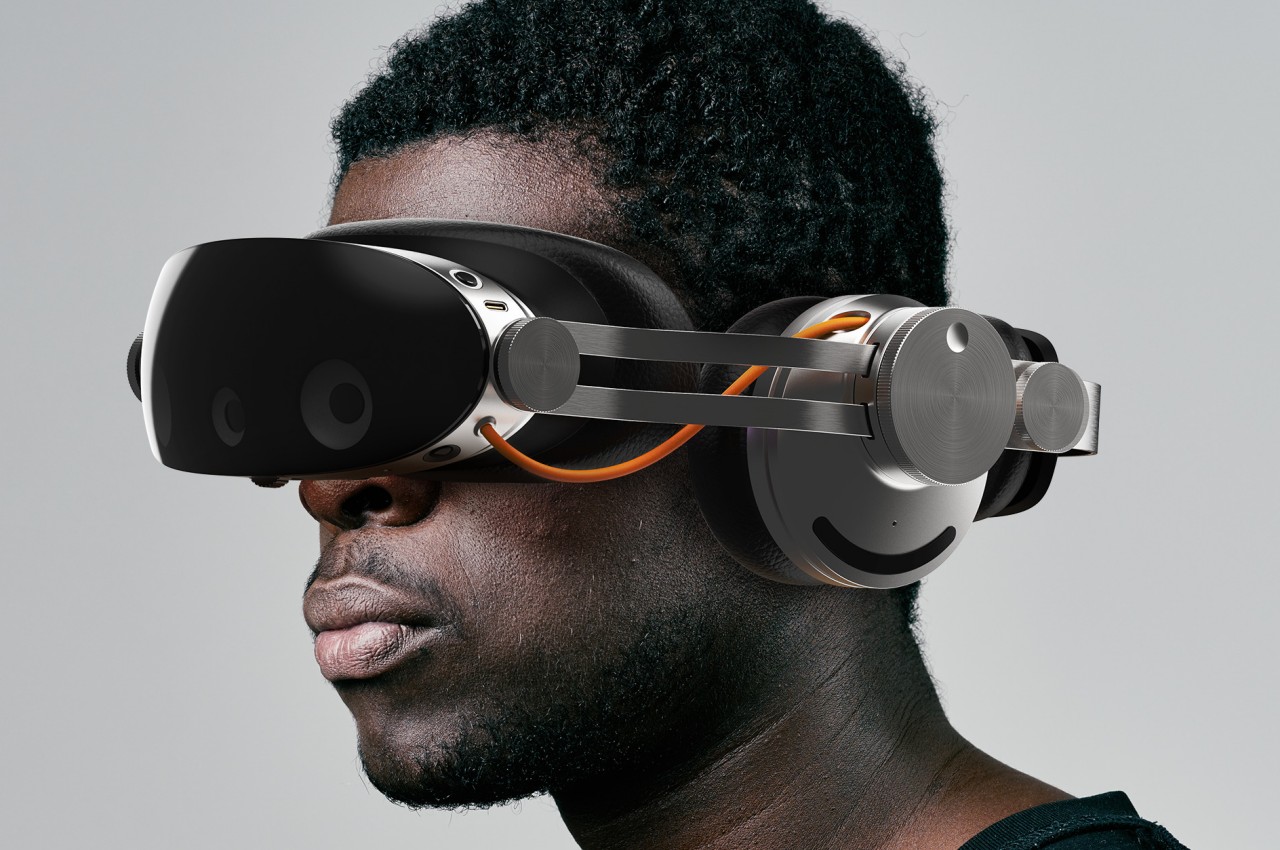
Thanks to the Apple Vision Pro, mixed reality is back in the news along with the hardware that will enable people to experience them. We have yet to hit the Holy Grail of headset design that will allow people to wear these devices on their heads for long periods, but brands like Apple and Meta definitely have that goal in their sights. MR headsets are getting lighter and slimmer, but that will always come at the cost of sacrificing some functionality that has to be offloaded to some other product you will have to buy and use separately. This concept design, however, goes in the other direction and tries to actually include everything you need for a more believable mixed reality experience, including the oft-neglected audio for your ears.
Designer: Dohyuk Joo
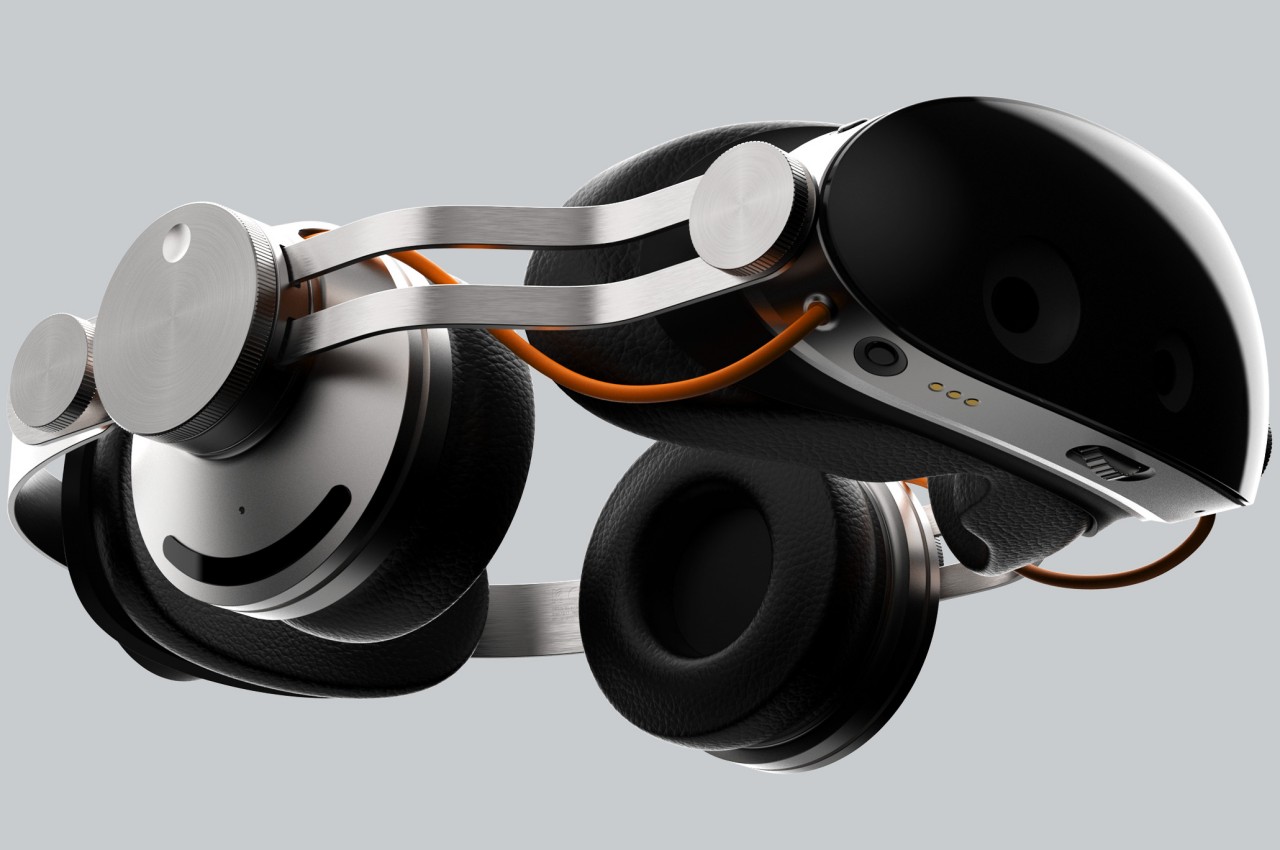
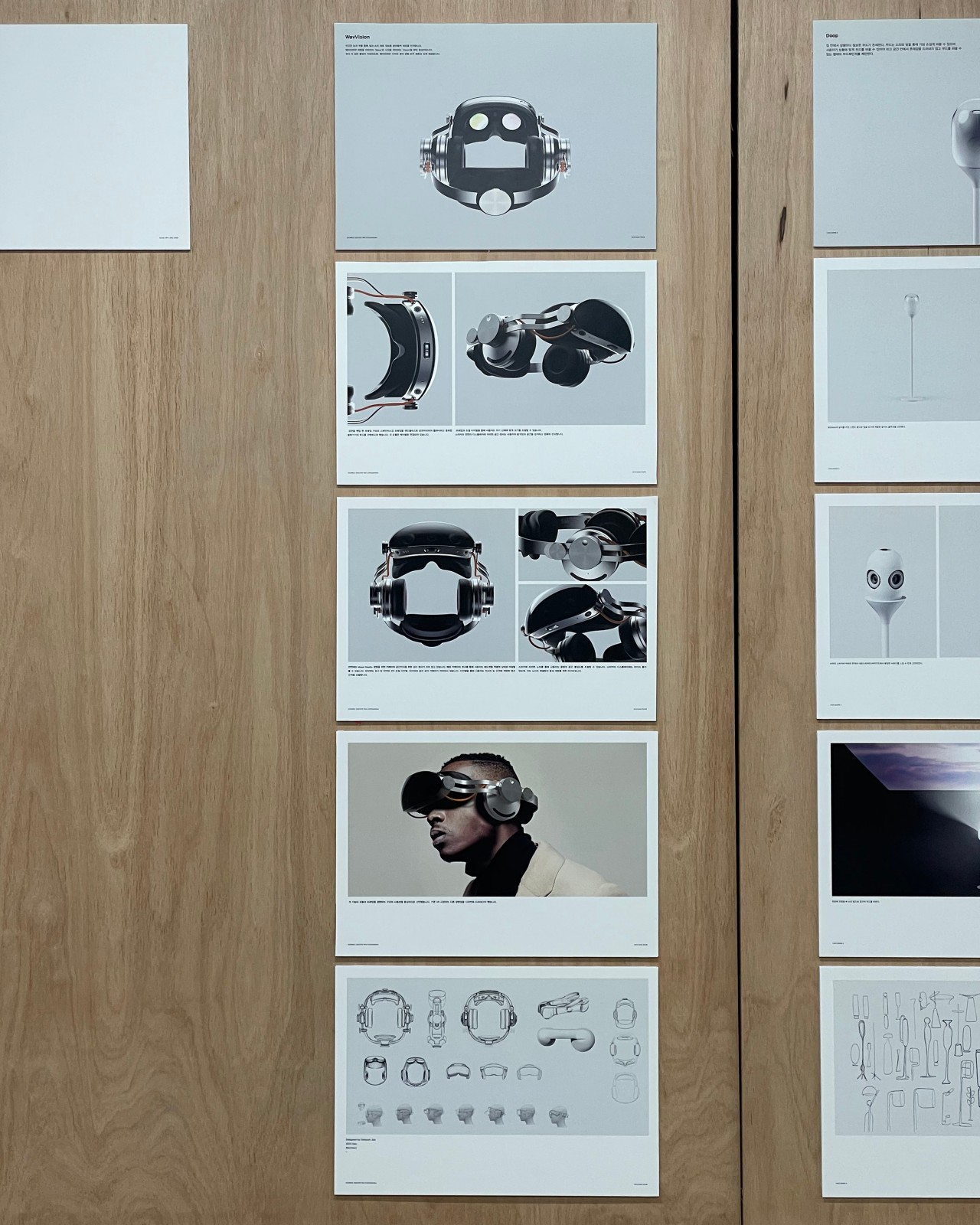
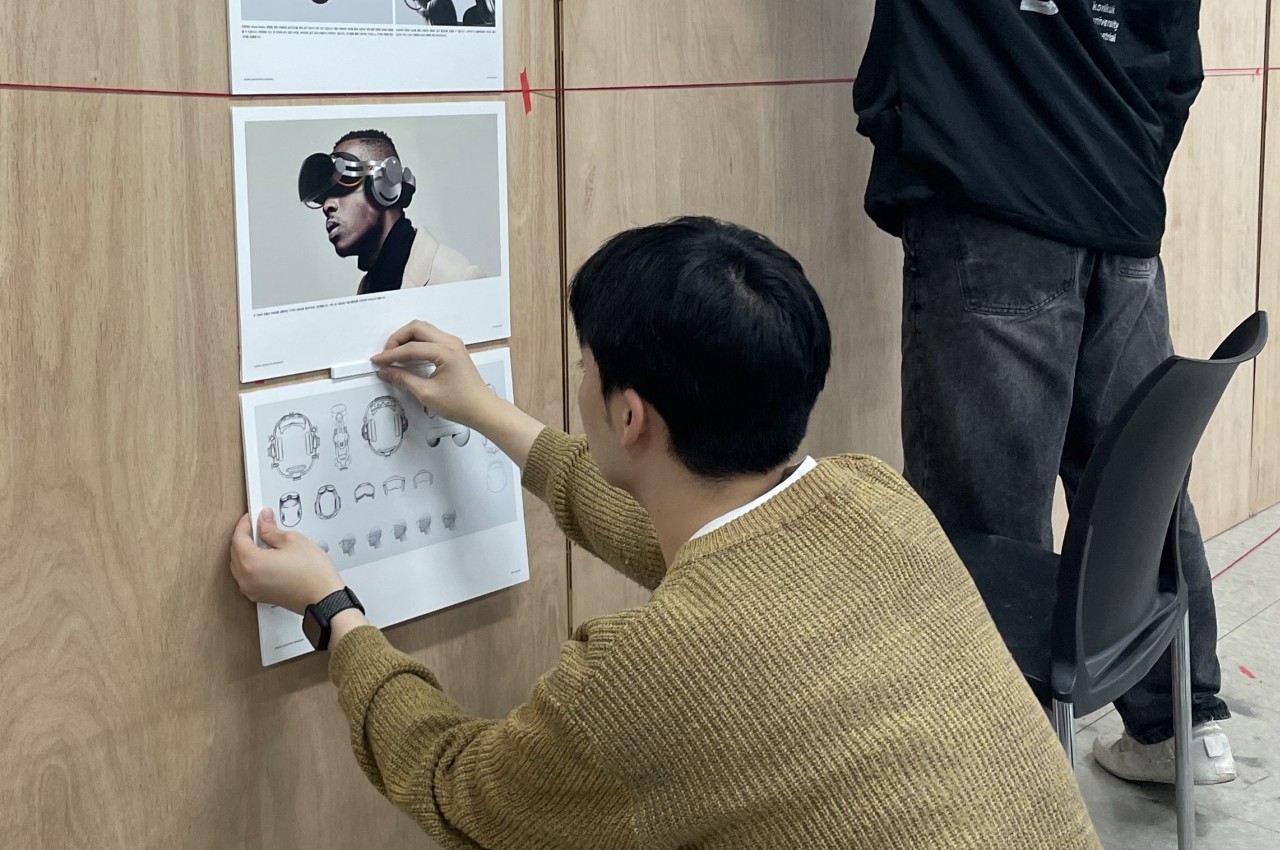
It’s harder to fool the eyes, which is why most of the focus in developing these mixed reality headsets is on the optics. But we don’t experience the real world with just our eyes, and a more immersive virtual world will also need to do more than just feed us visual data. Just like in the real world, audio is either taken for granted or at least takes second place only, but this headset design tries to balance the scales, even if it means going back to the days of bulky headsets.
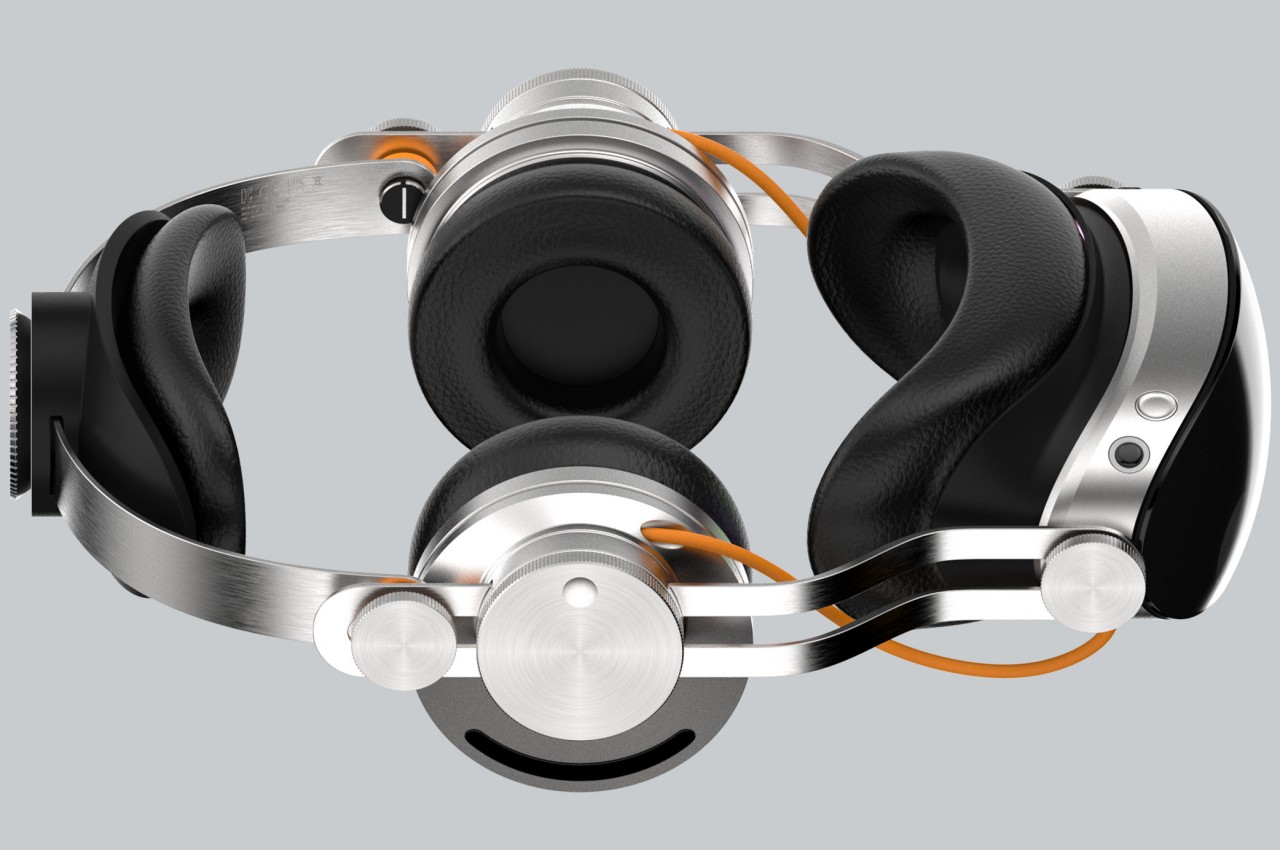
WavVision, whose name tries to embody the combination of sound and sight, attempts to be an all-in-one mixed reality solution for our eyes and our ears. In a nutshell, the headset includes over-ear headphones to deliver audio, particularly spatial audio, that would complete the immersion of existing in a virtual space. This wouldn’t be the first headset to attempt that combination, but it is definitely one of the few that make it painfully obvious. The Meta Quest 3, for example, does have built-in speakers but uses an open-ear design that simply directs the audio waves toward your ear.

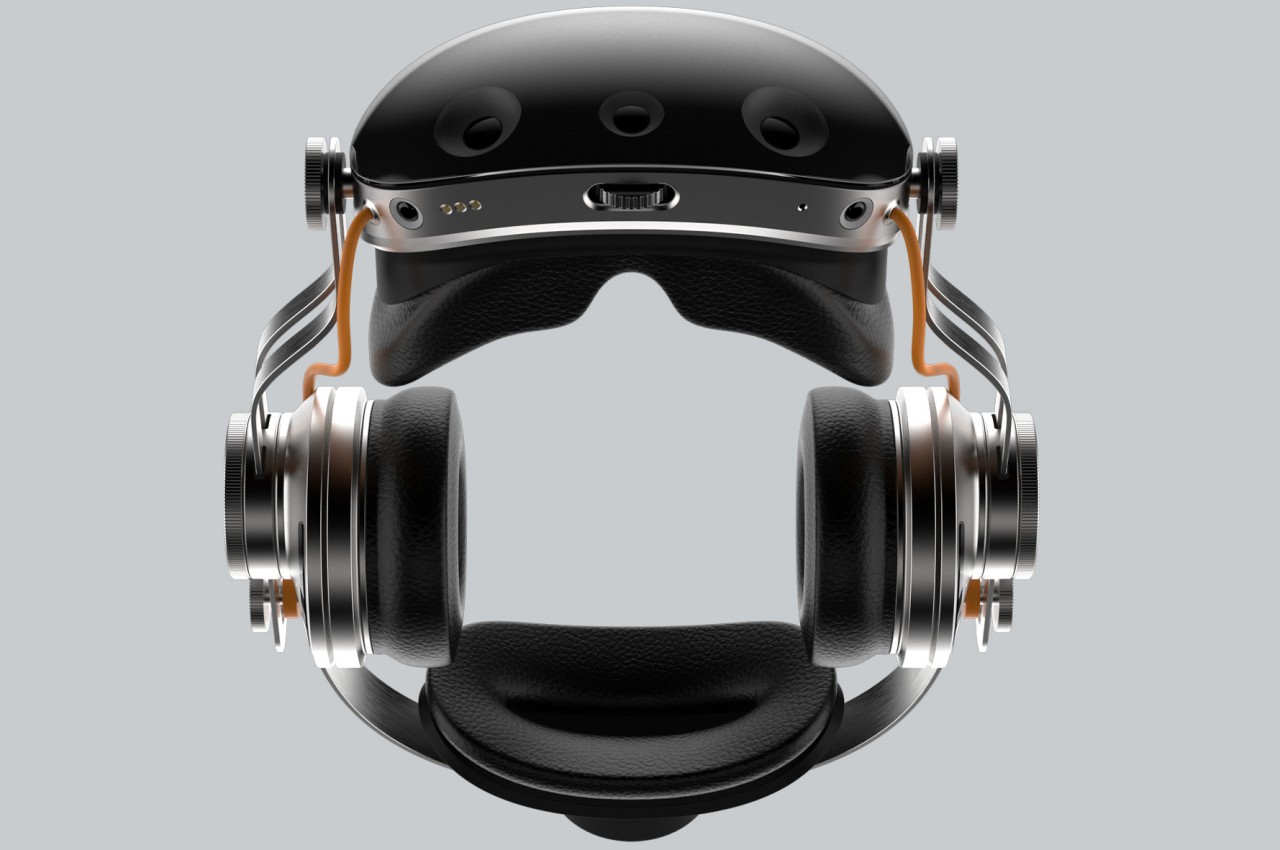
In addition to having over-ear cups built into the design, the very form and construction of WavVision go against the dominant trend in this niche market. The frame is made from thick steel plates bent to loosely follow the shape of the head. It’s a material that suggests quite a bit of weight and sharpness, which is the opposite of what headsets today are aiming for. It gives the design a distinct industrial aesthetic, which is intentional but also questionable.
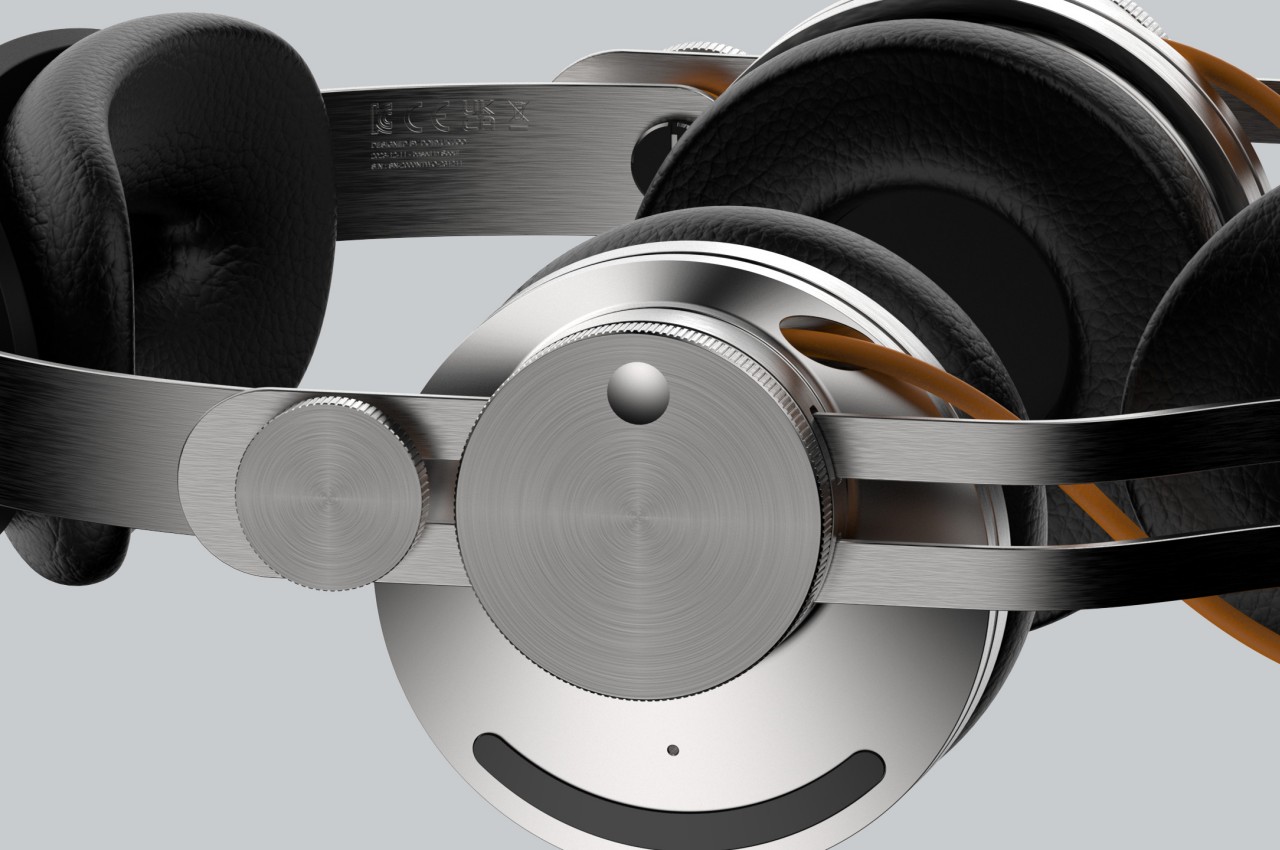
One of the reasons why headsets don’t include dedicated headphones is because the audio experience could probably be delivered by more dedicated hardware that’s specially designed for performance as well as comfort. Building that part into the headset only weighs the product down, both literally as well as in terms of costs. Conversely, an integrated design ensures a unified appearance and, at least theoretically, a more complete experience. Admittedly, few of the mixed reality brands today seem to be paying that much attention to the audio aspect, but if Apple will be playing this game for long, it will undoubtedly dip its toes in that area sooner or later.
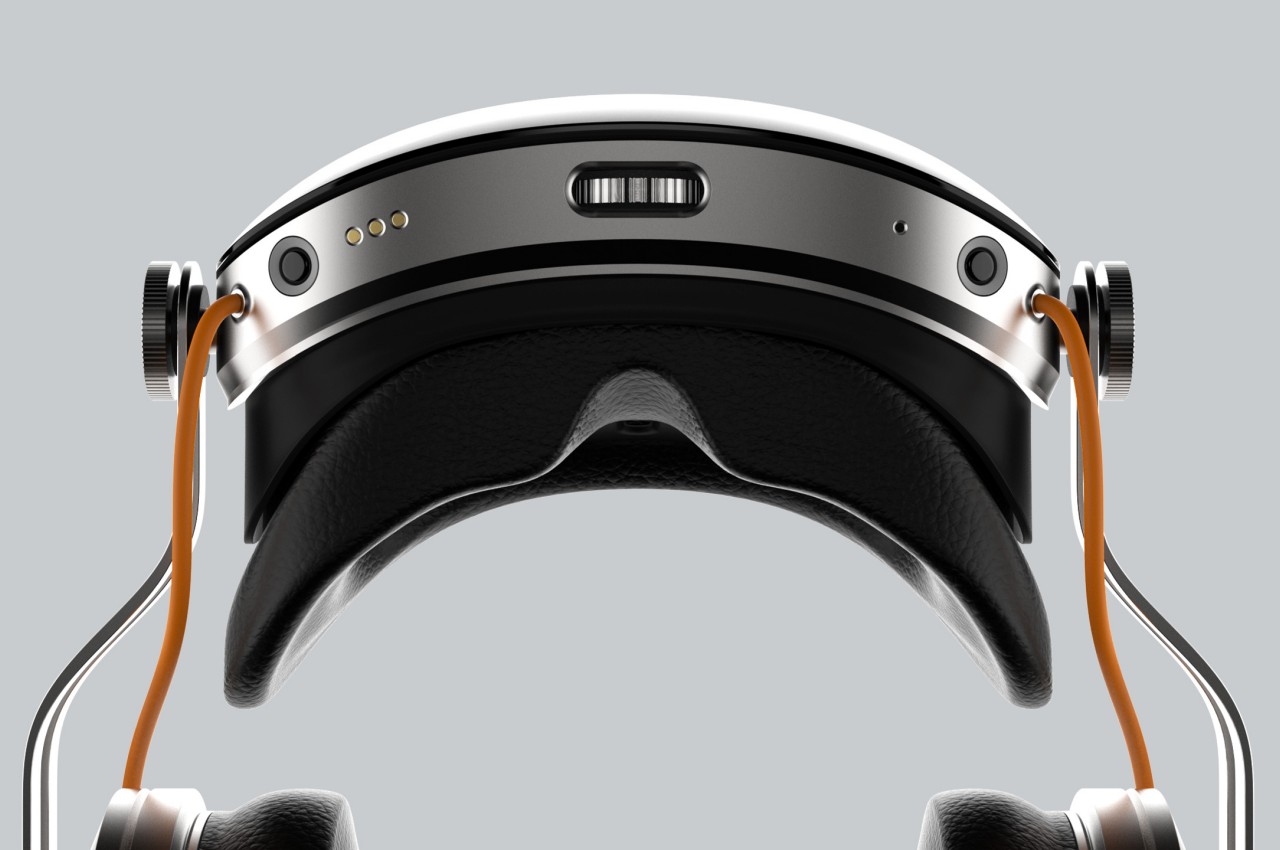
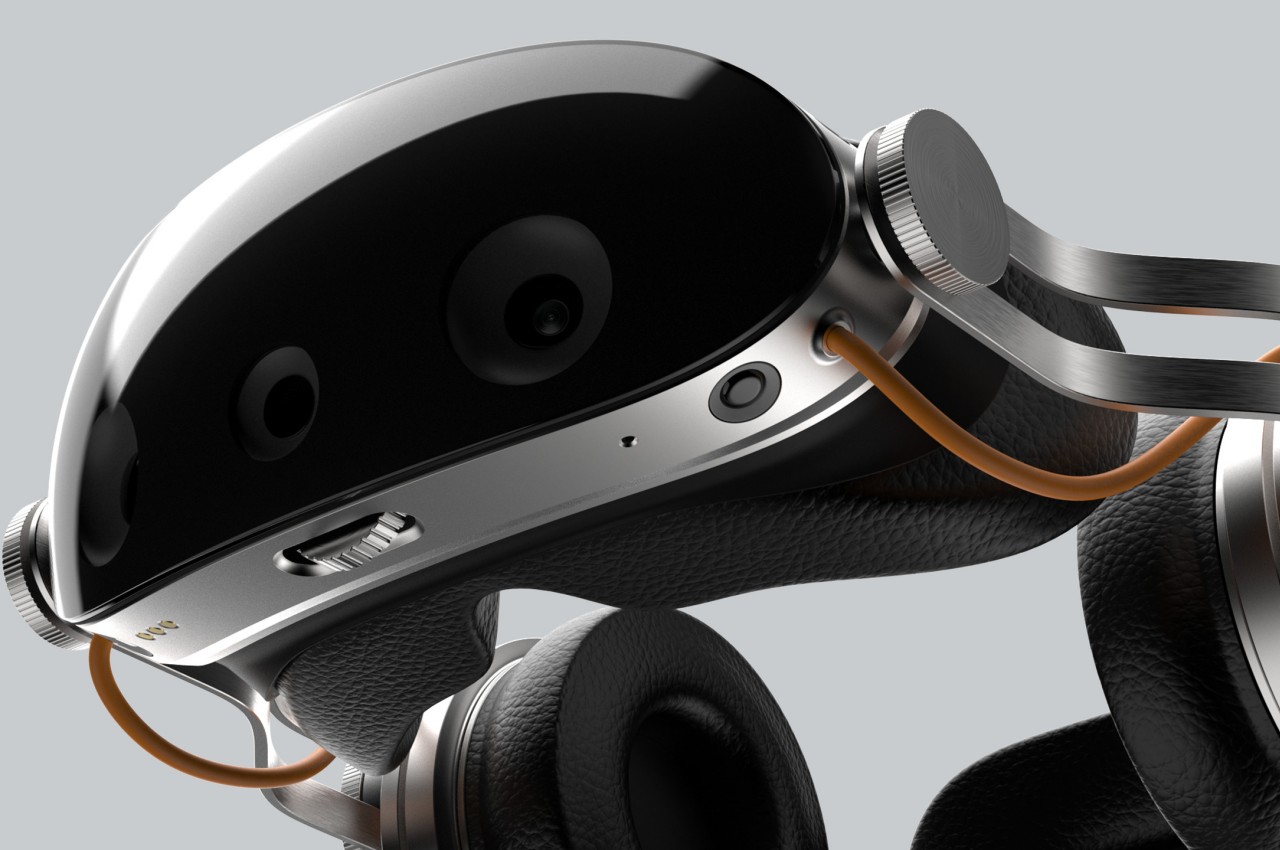
The post Mixed reality headset bucks design trends for a complete audiovisual experience first appeared on Yanko Design.
Apple has entered a new product category with the Vision Pro. The expensive eyewear, positioned to transport us into the future of VR, is an expensive deal to begin with at $3,499. So, ripping something of that value apart to just reveal how repairable it is and to what it packs within that makes it worthy of making Apple a new category giant may seem obnoxious to us.
But that’s little of a deterrent for the folks at iFixit, who pride in tearing down the latest gadgets to see how easy or difficult it is to repair them and examine what makes it a favorite. In that scheme of things, iFixit has put its heating guns and prying tools to use to tear open Apple’s new tech marvel. What they see is pretty straightforward: a few easy-to-remove parts and then complicated screws, connectors, and seals to get past before fully revealing the impressive cameras and more.
Designer: iFixit
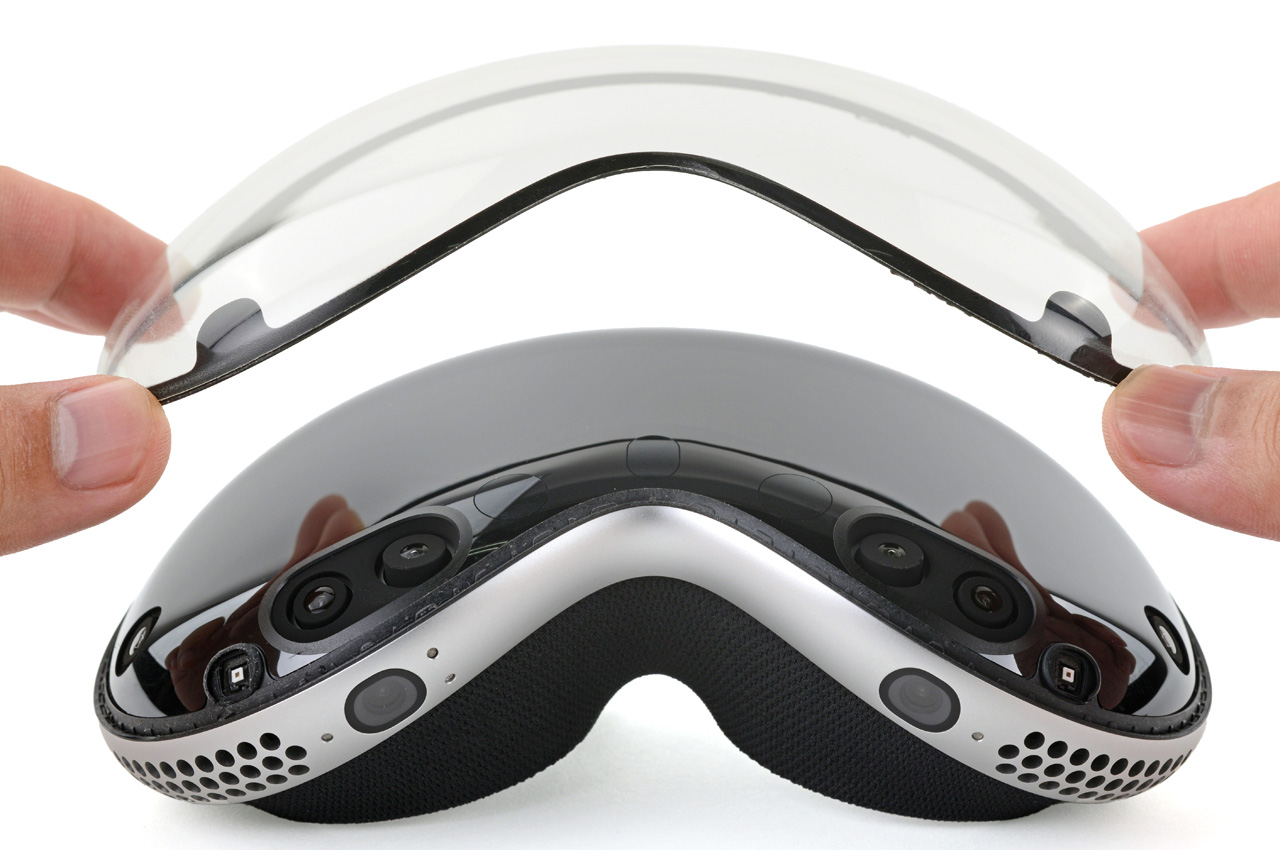
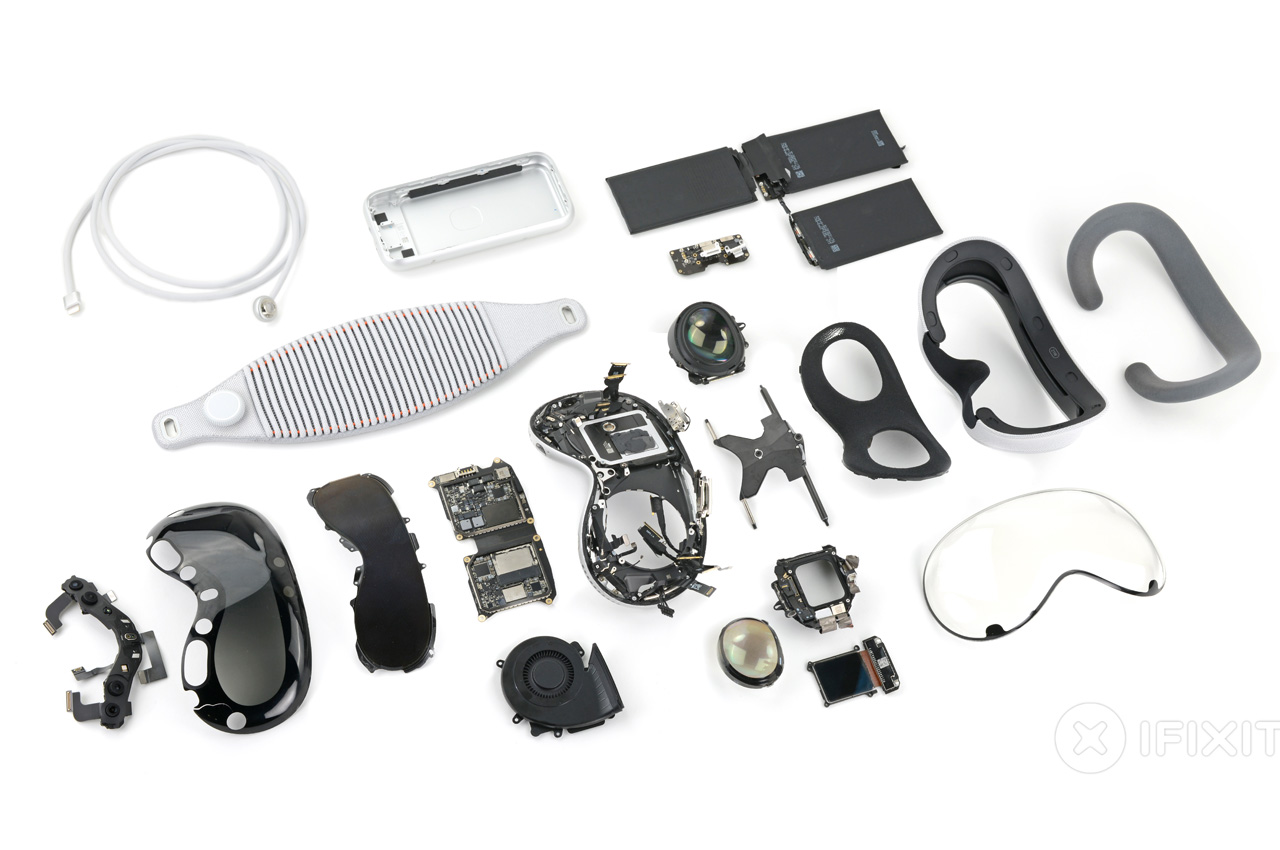
Between the easy take offs and the intricate connectors, the Vision Pro – iFixit teardown reveals – has some unbelievable tech crammed. Some of this is never seen before, especially the advanced EyeSight display which it is discovered uses several videos of the wearer’s eyes simultaneously.
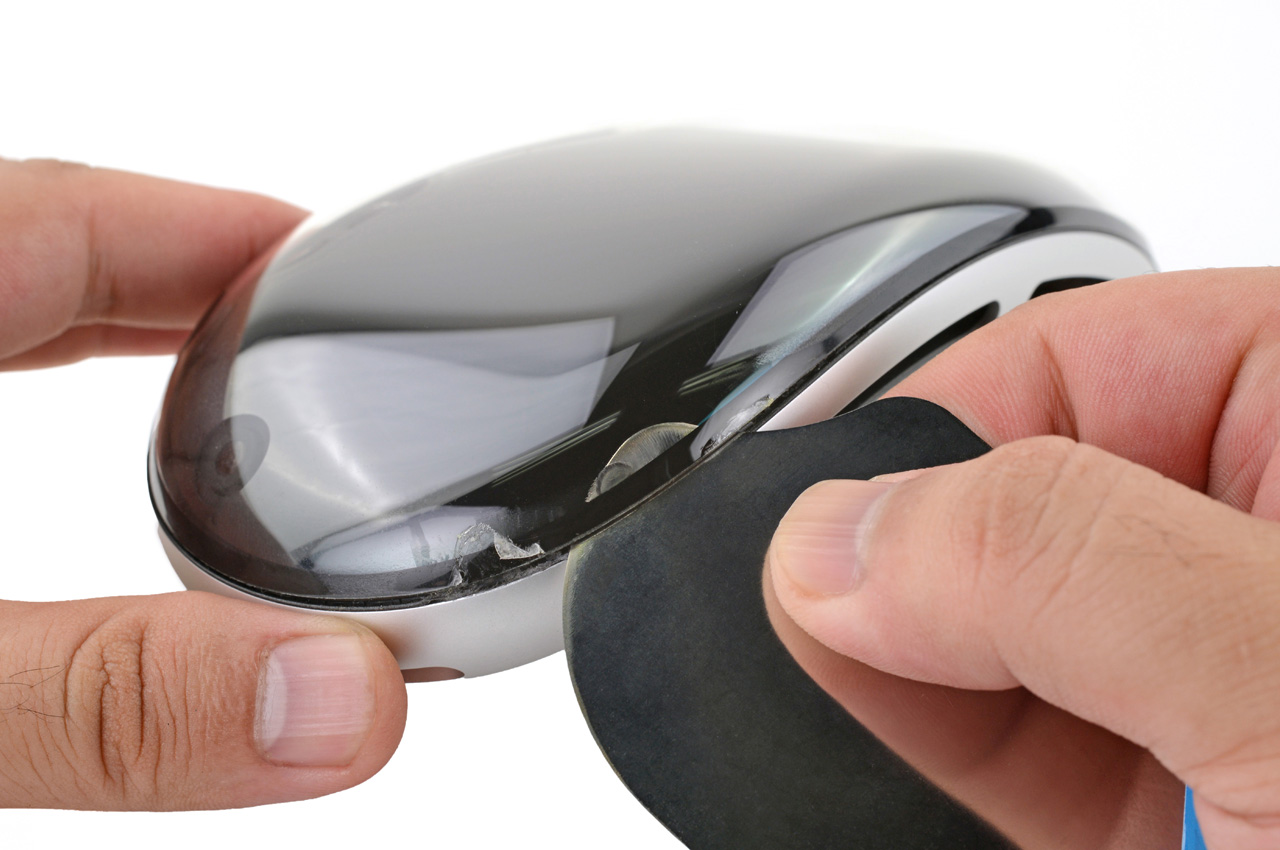
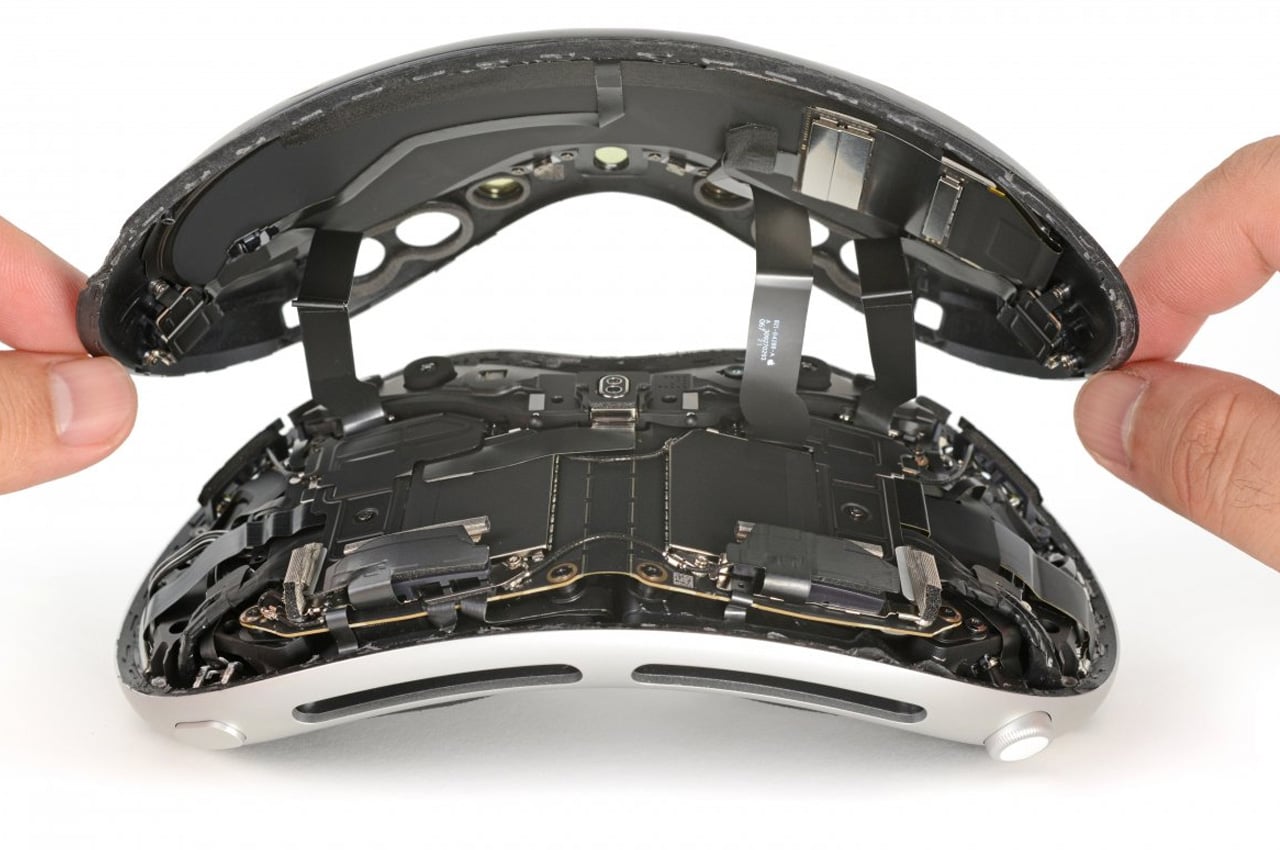
As the iFixit video runs through the teardown it shows Apple’s new AR/VR headset is similarly detailed and intriguing as the other Apple devices. So, the process of tearing it down is not easy and required a heat gun, screwdrivers, prying tools, and lots of effort. But as you’ll see, the effort is worth appreciating.

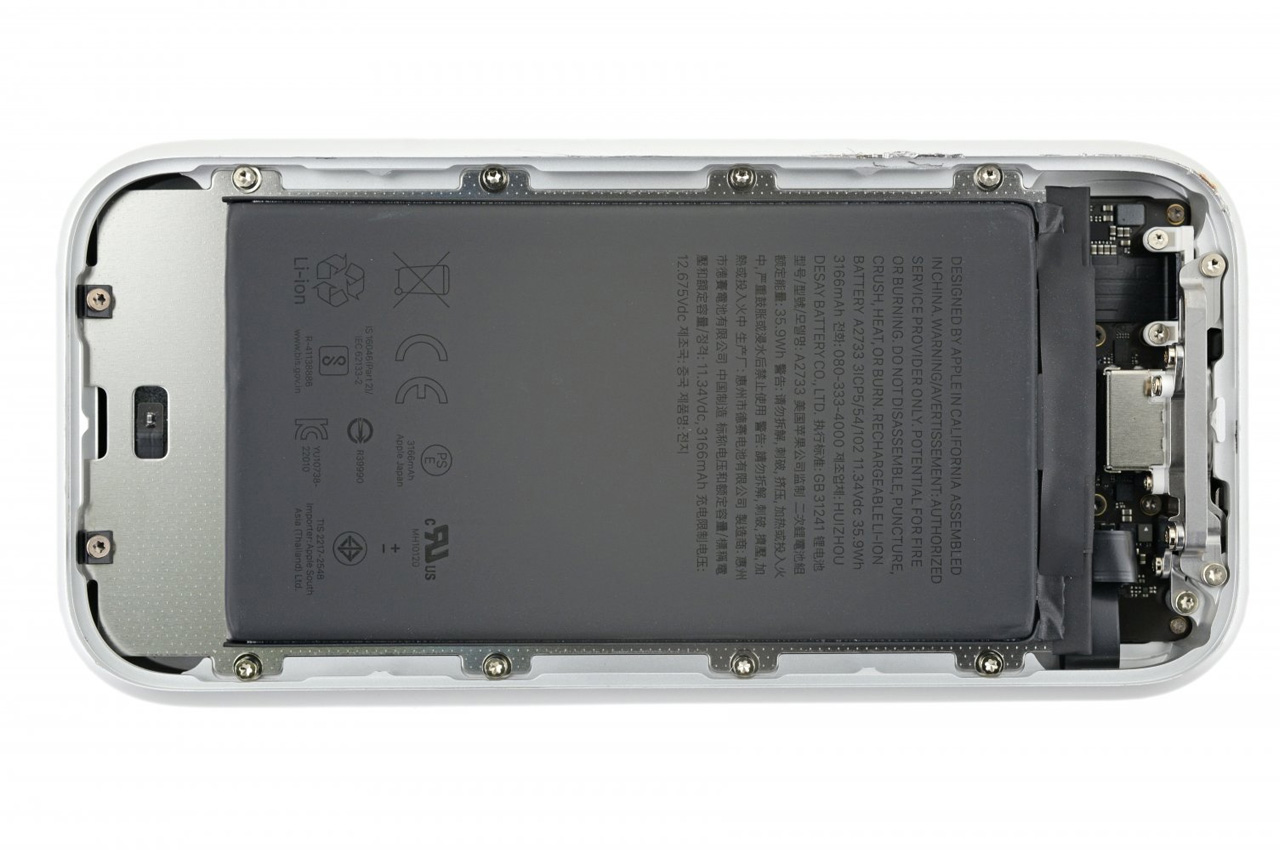
First up, the video suggests the customizable face cushion, light seals are easy to pull off, while the power chord has to be turned to unlock. The device’s knit band pops easily off the headgear stems, from the integrated latch. Stem with speakers disassemble the eye housing swiftly as well leaving the cameras, sensors, battery, R1 chip, and EyeSight display to take a look into.

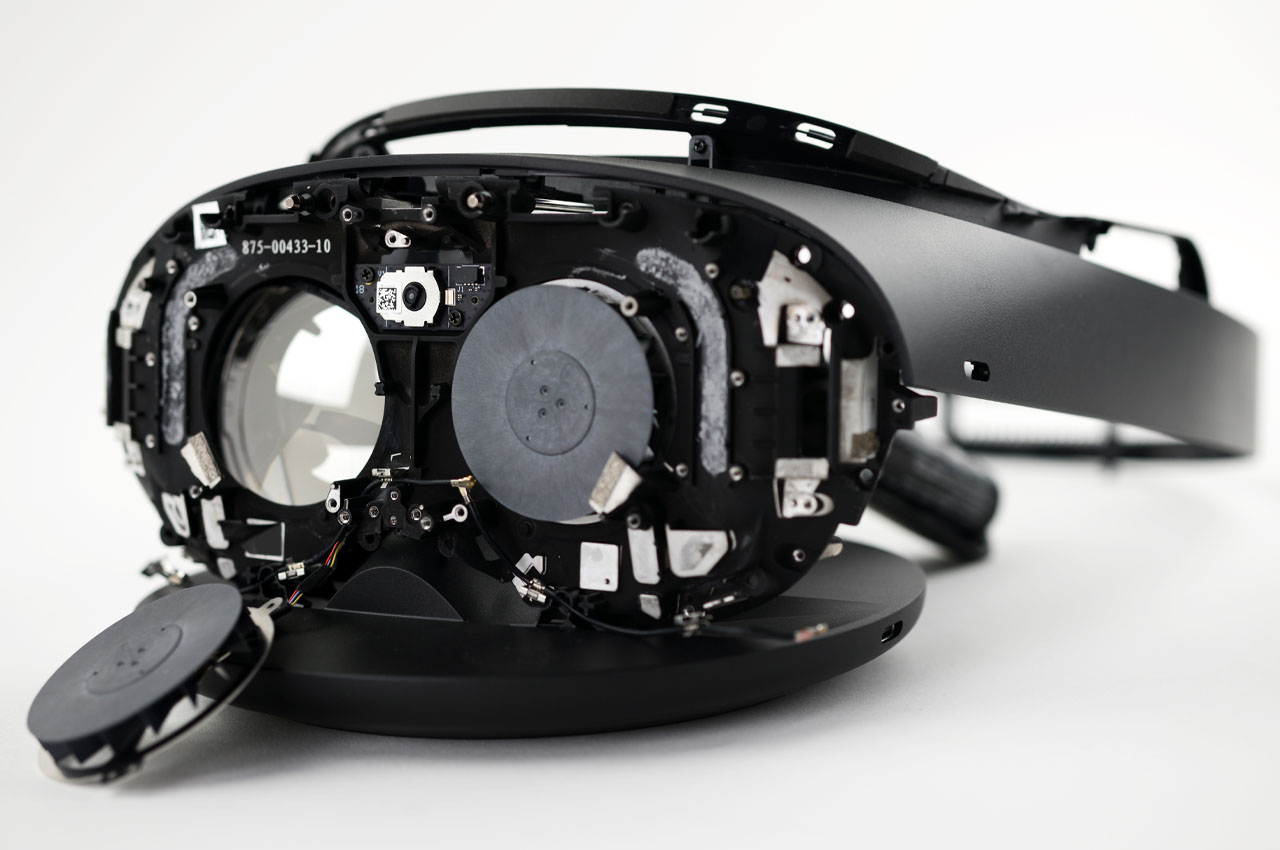
This is according to iFixit the first scratch of the detailed teardown that would be revealed in the near future. The initial teardown however shows that the Vision Pro is inside out what we have heard of. It has some high-end tech within its small form factor, but it will require some elbow grease to repair.
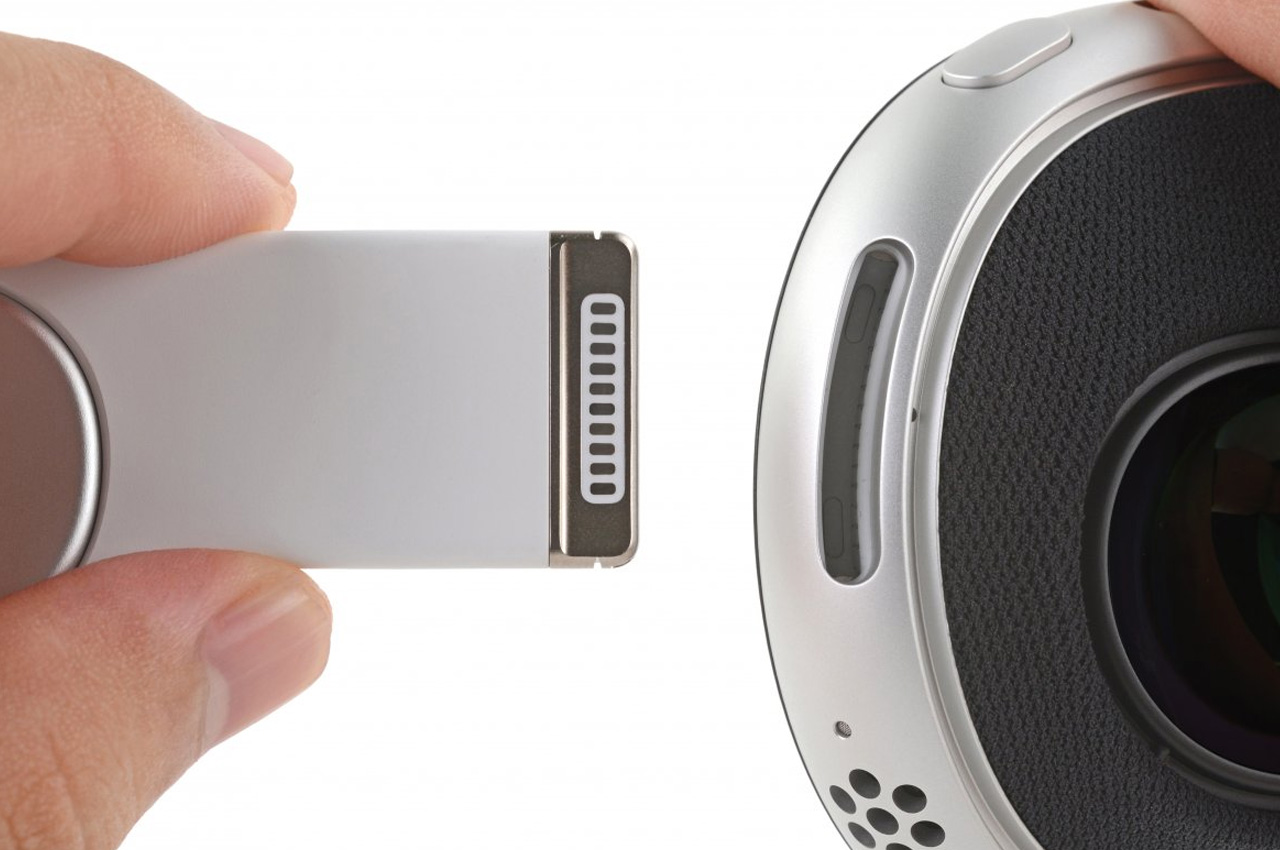
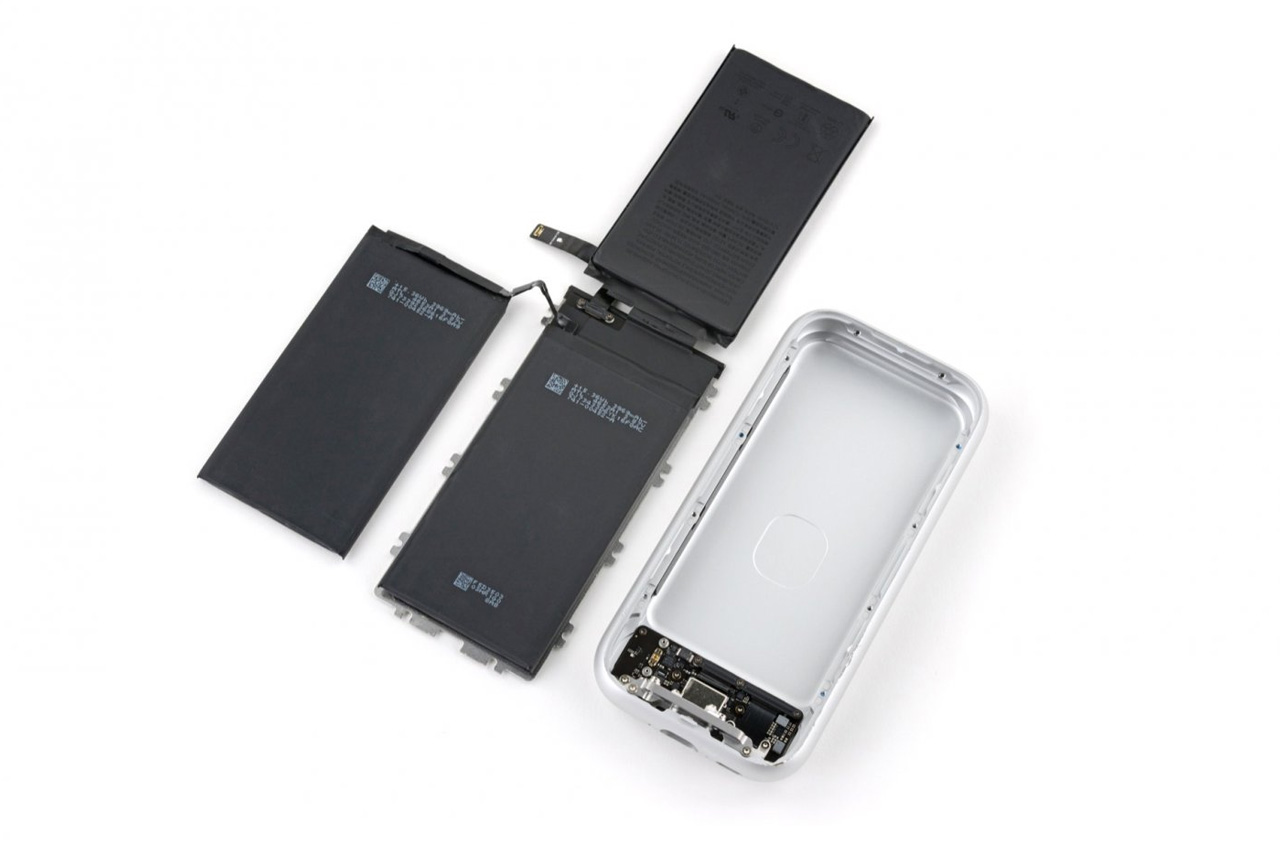
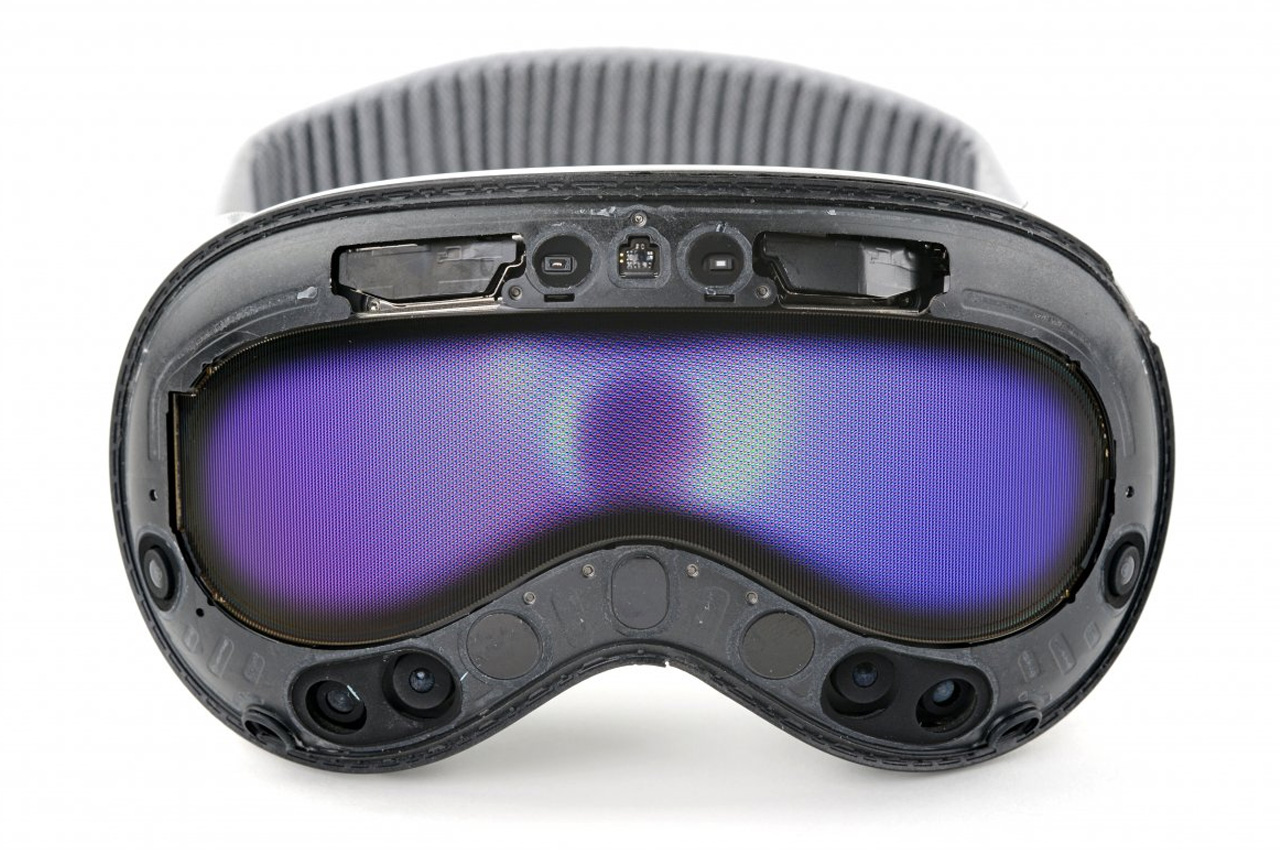
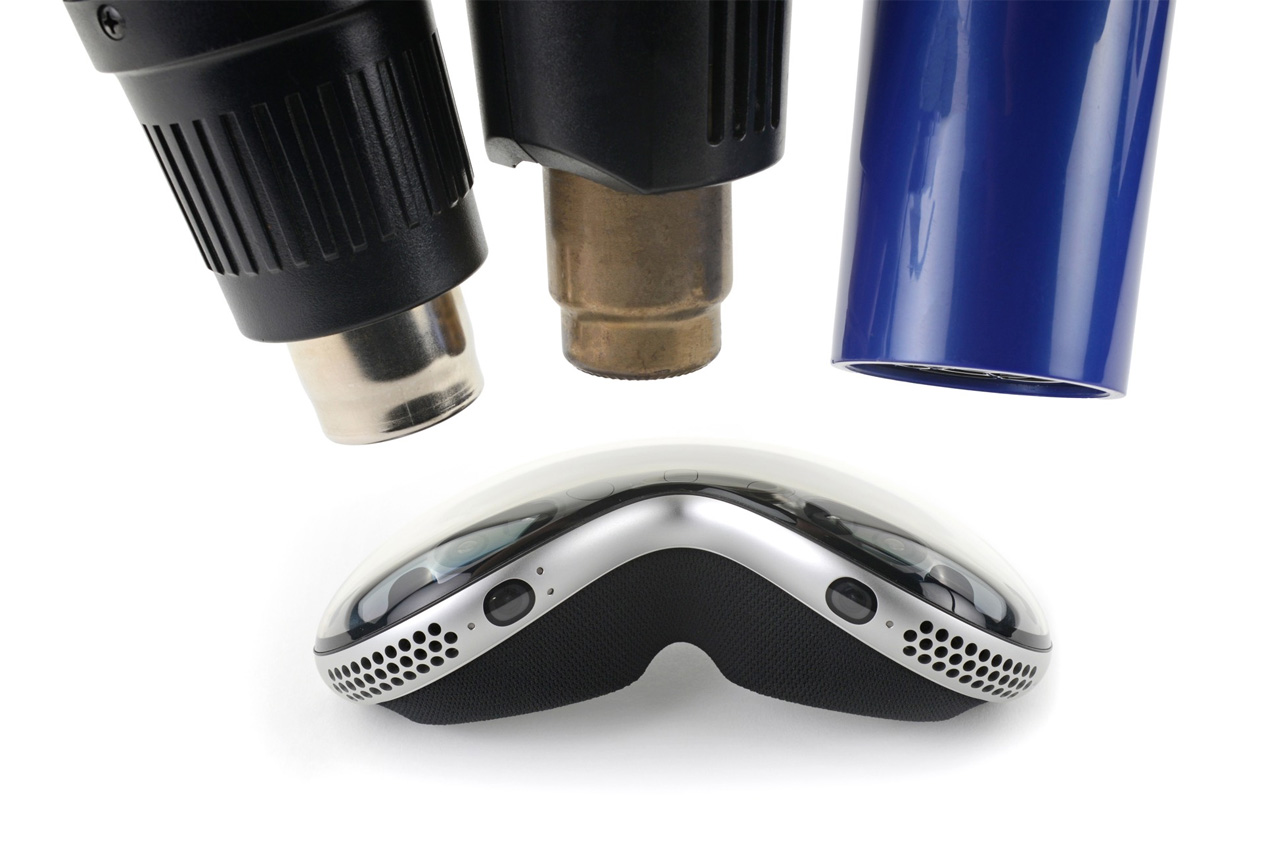
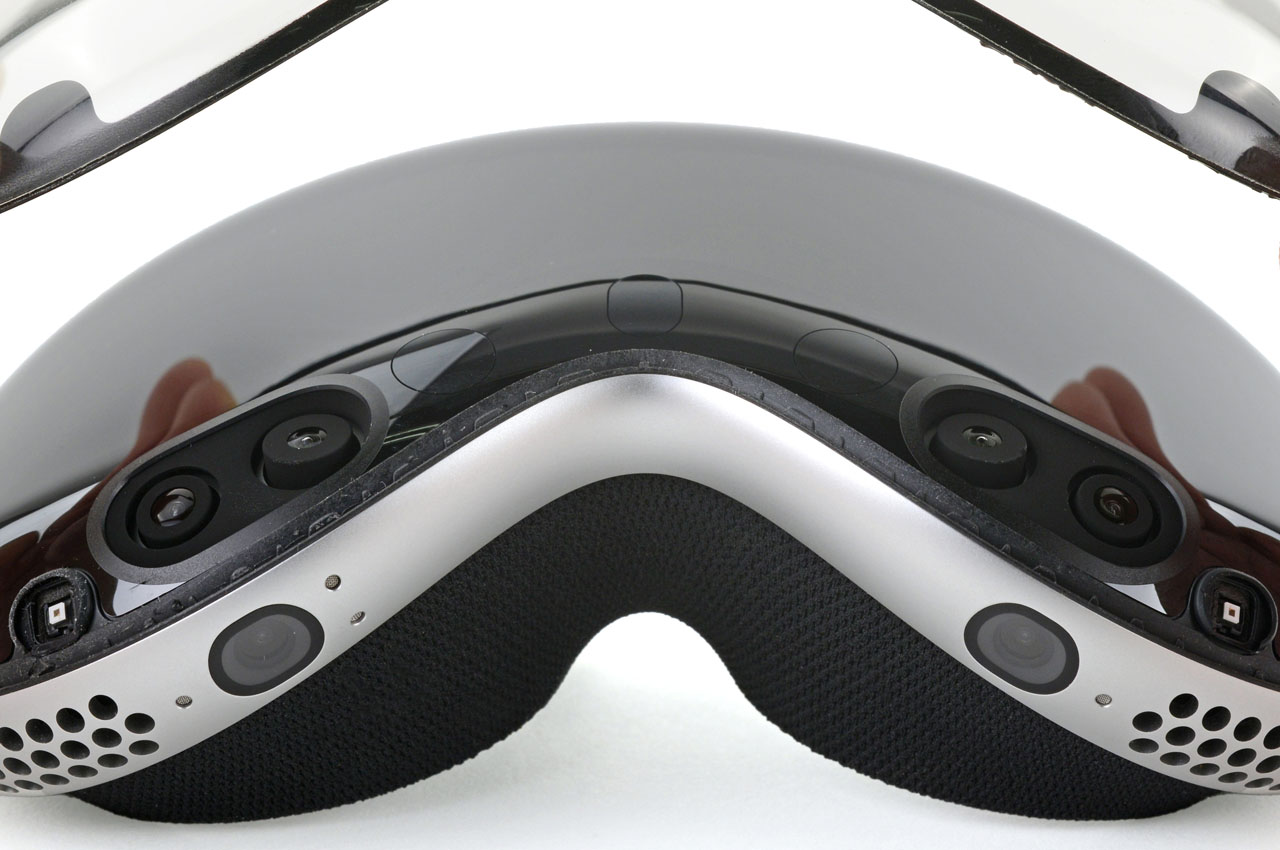
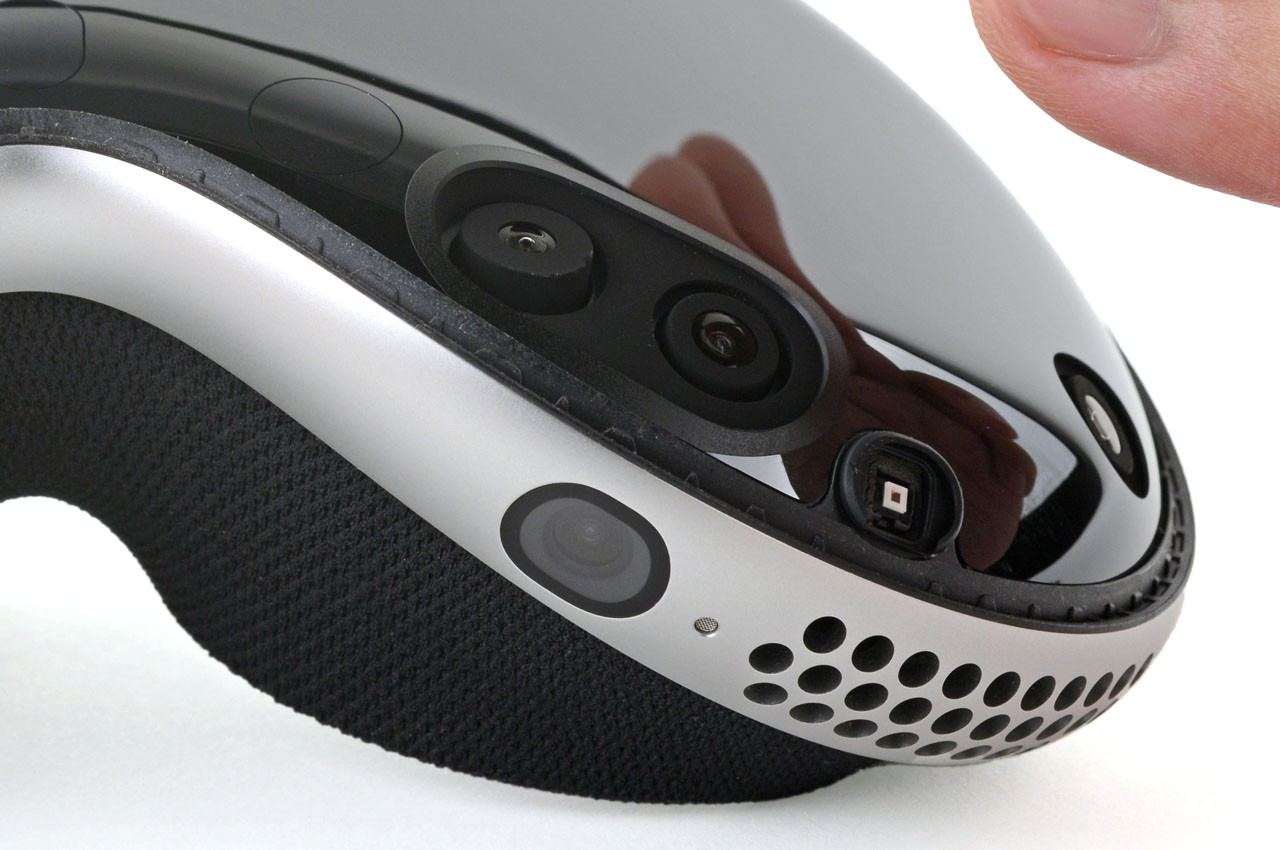
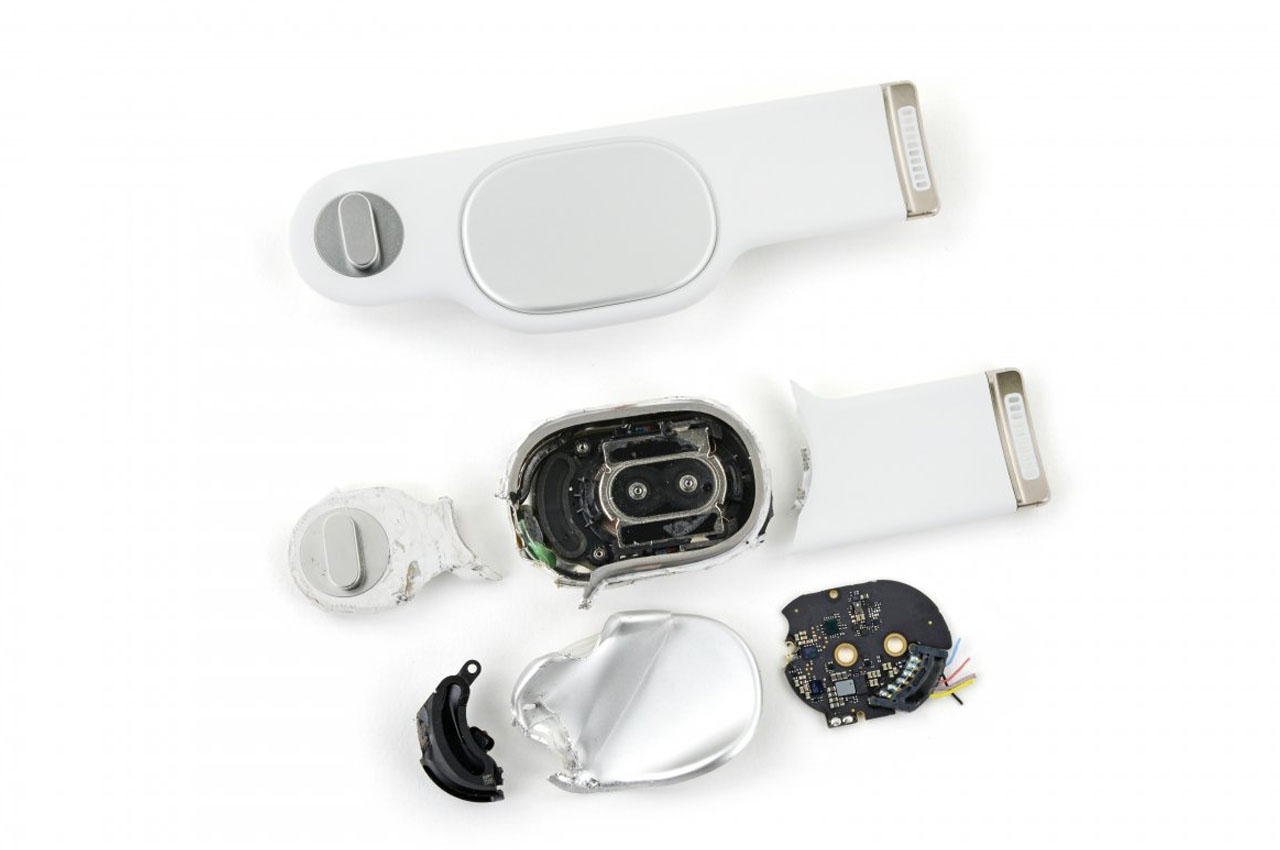

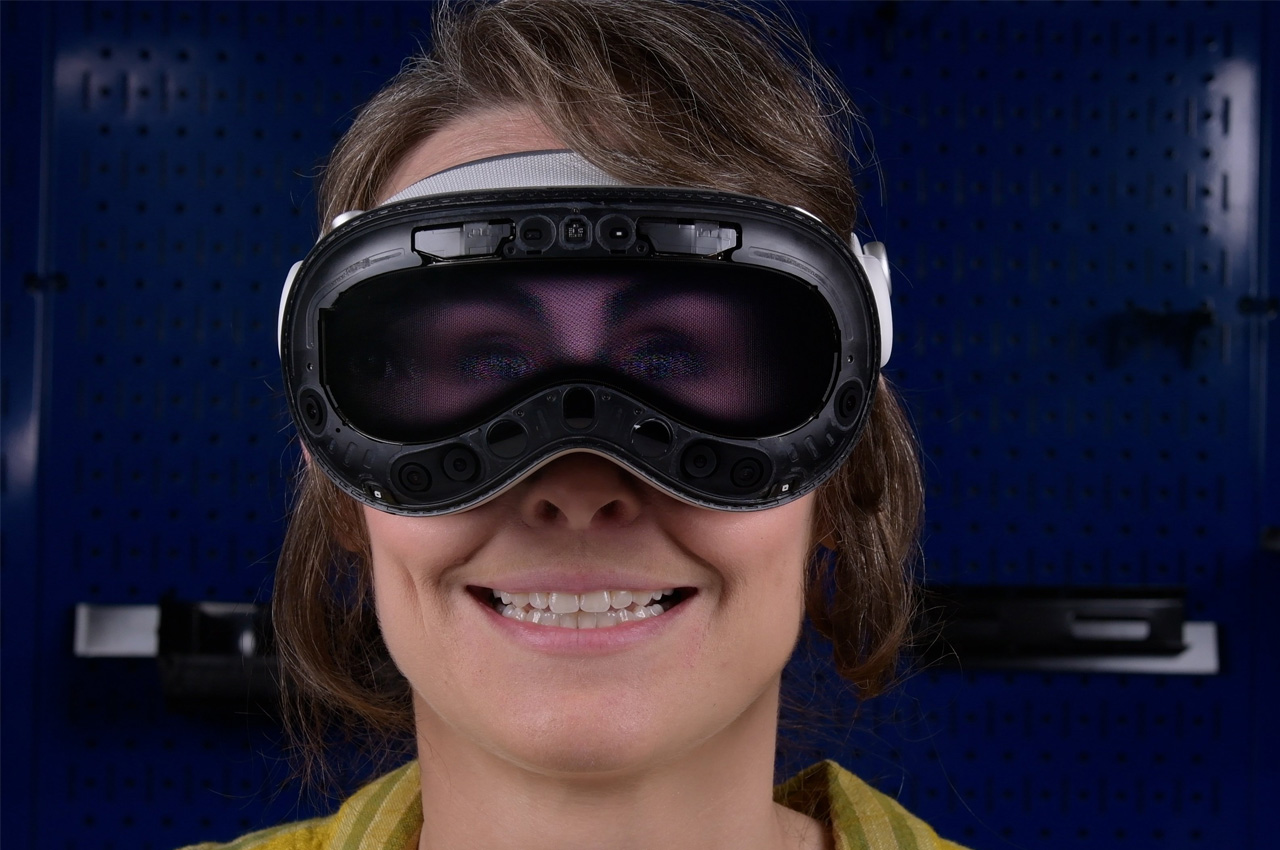
The post Apple Vision Pro iFixit teardown reveals what’s inside and how it works first appeared on Yanko Design.
Although it’s definitely the latecomer, Apple is unsurprisingly stirring up a storm with the launch of the Vision Pro. Mixed reality, or spatial computing as Apple named it, is en vogue once again, and many companies are making a lot of noise to demonstrate how they’ve been playing the game long before the Vision Pro was even announced. That boast comes with the implication that they can offer a better experience and a more accessible product, like this visor-like Visor headset that’s trying to be a better Vision Pro than the Vision Pro with a more open platform, a more stylish design, and most importantly, a more affordable price tag.
Designer: Immersed
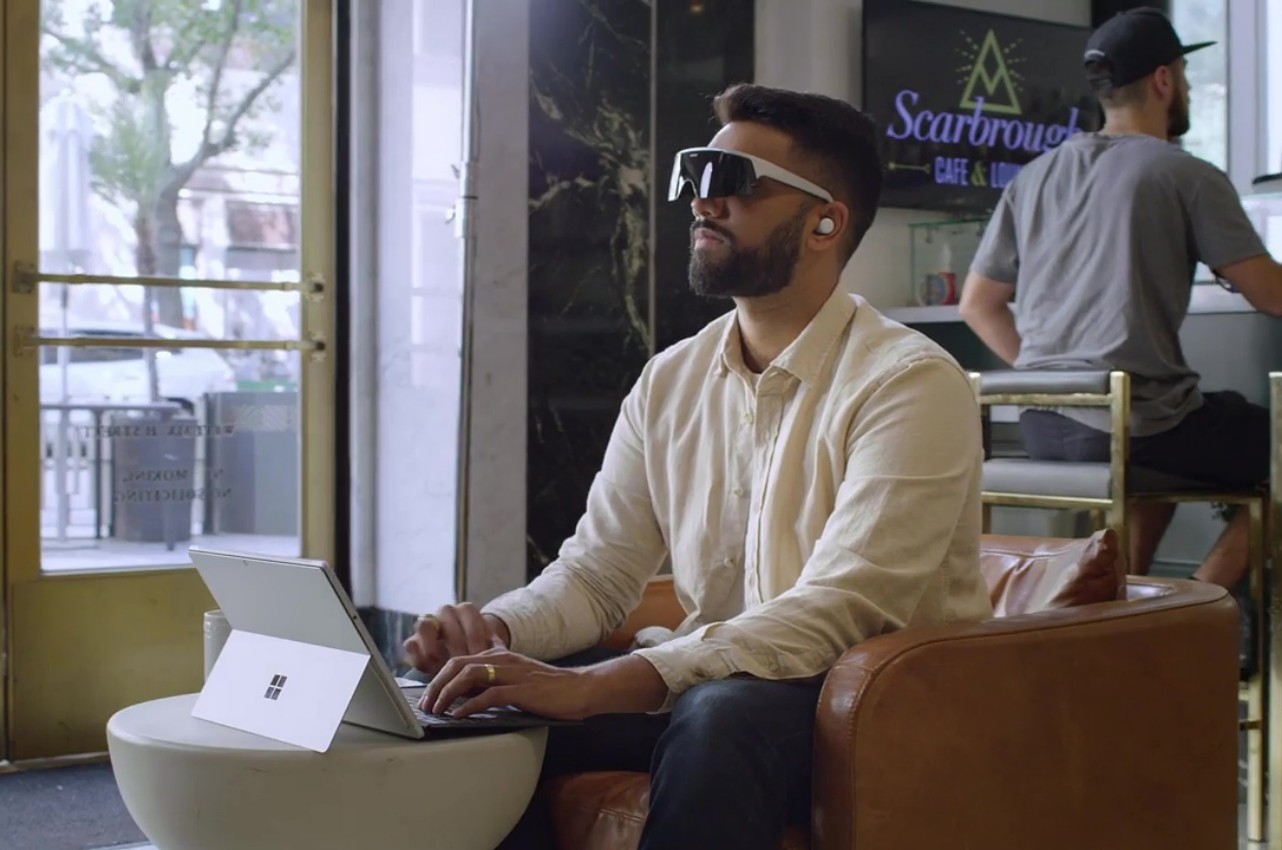
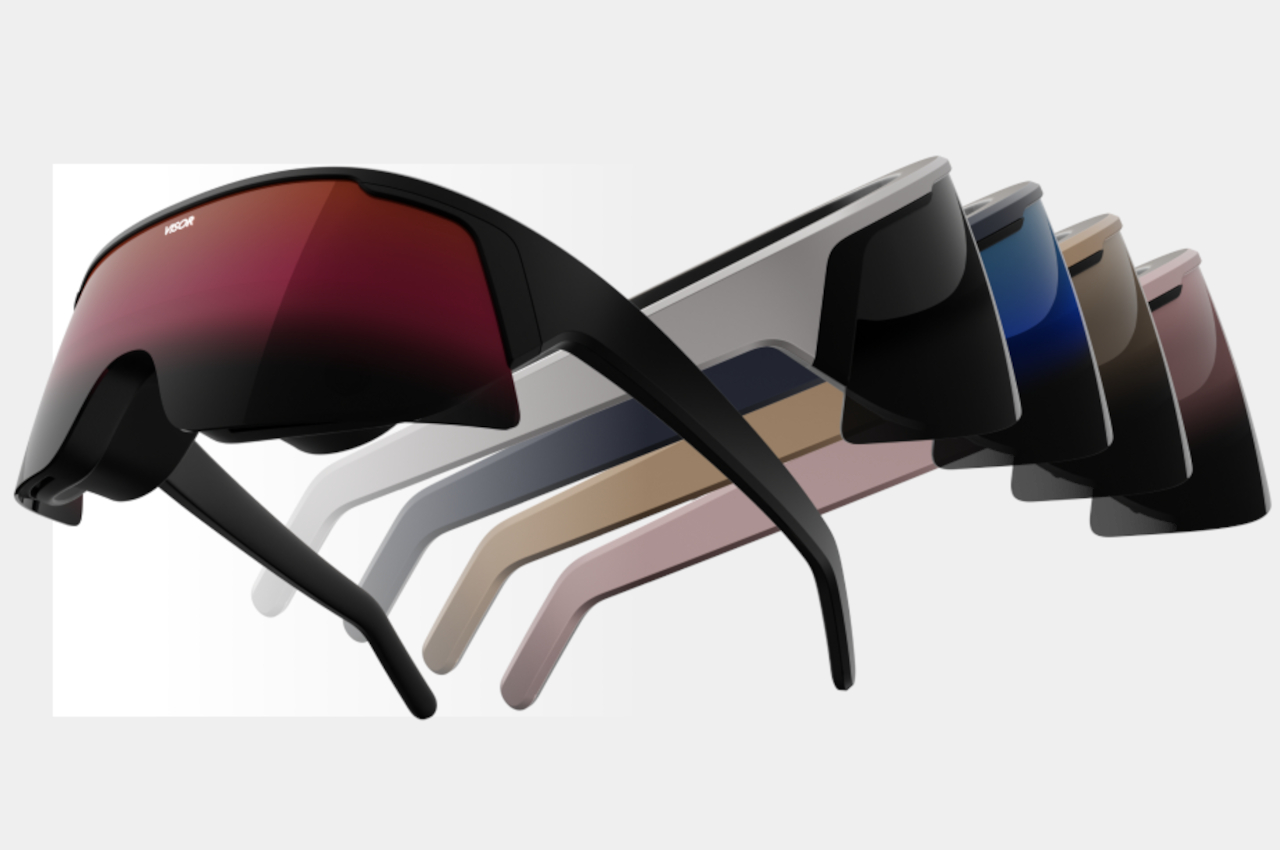
Although the Apple Vision Pro is definitely more stylish than other mixed reality headsets, it’s still a headset that leaves nothing to the imagination about what you’re wearing or doing. Visor, on the other hand, looks more like its namesake, at least outwardly. Despite the spectacle-like design, it actually bears 4K micro OLED displays per eye, a lot more than what the Visor Pro boasts. And yet the headset itself manages to weigh only 200g, more than half what the Meta Quest 3 weighs. And yes, it has an external battery to help keep the weight down.
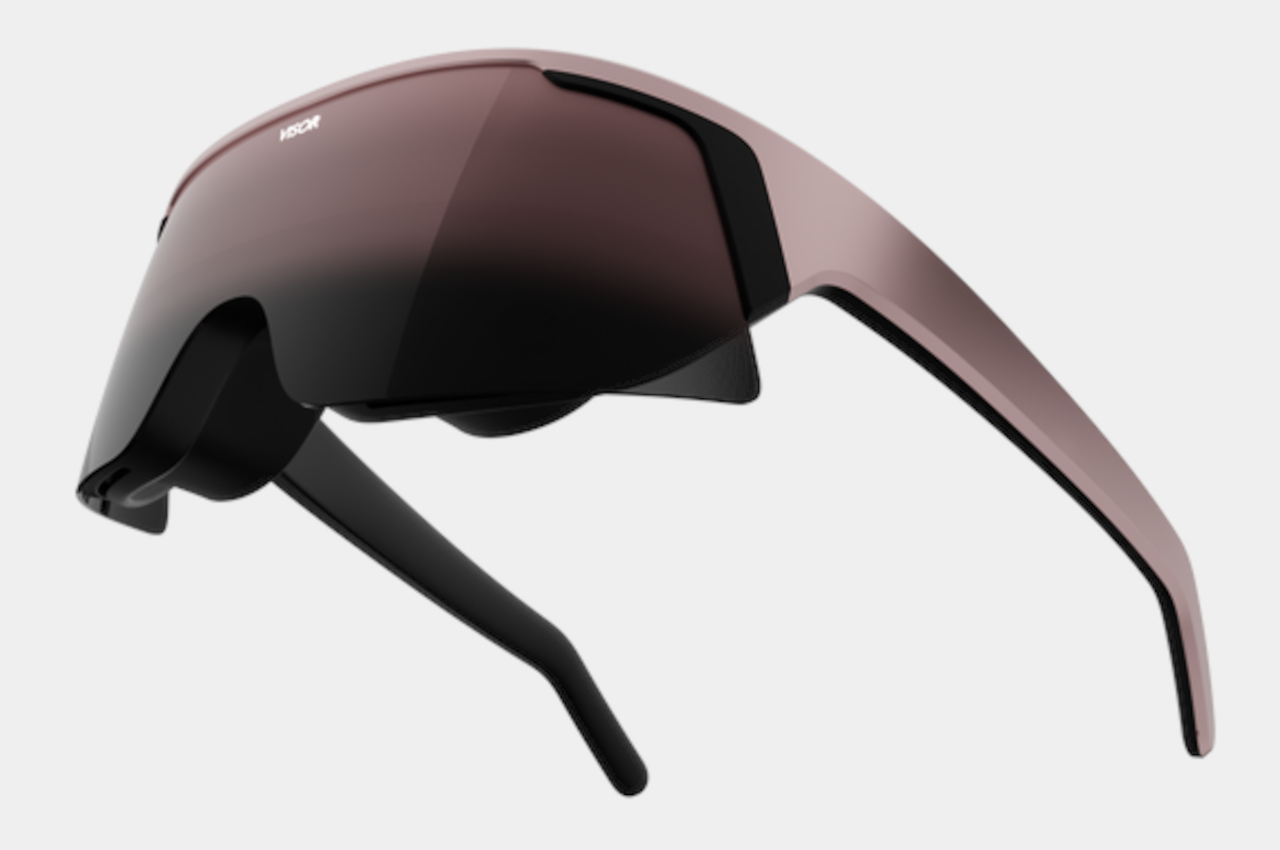
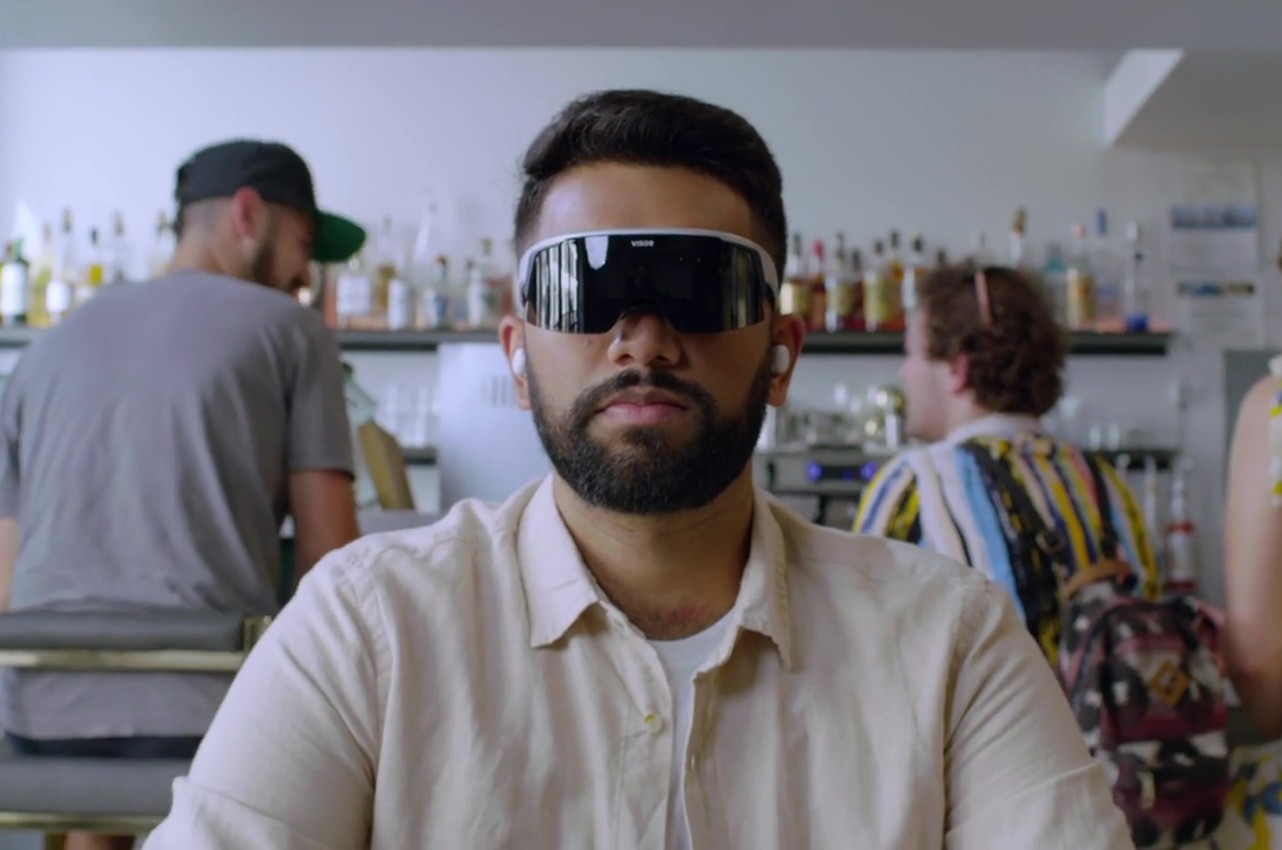
Beyond just the design of the device itself, the Visor offers a completely different experience from the likes of the Vision Pro or even the new Xreal Air 2 Ultra that was announced at CES 2024 earlier this month. It neither runs its own operating system nor does it just mirror the screen of a computer. Instead, it harnesses Immersed’s mixed reality software that it has been developing for years that practically gives you virtual monitors spread across your vision, resulting in a wider field of view compared to the common smart glasses implementation.
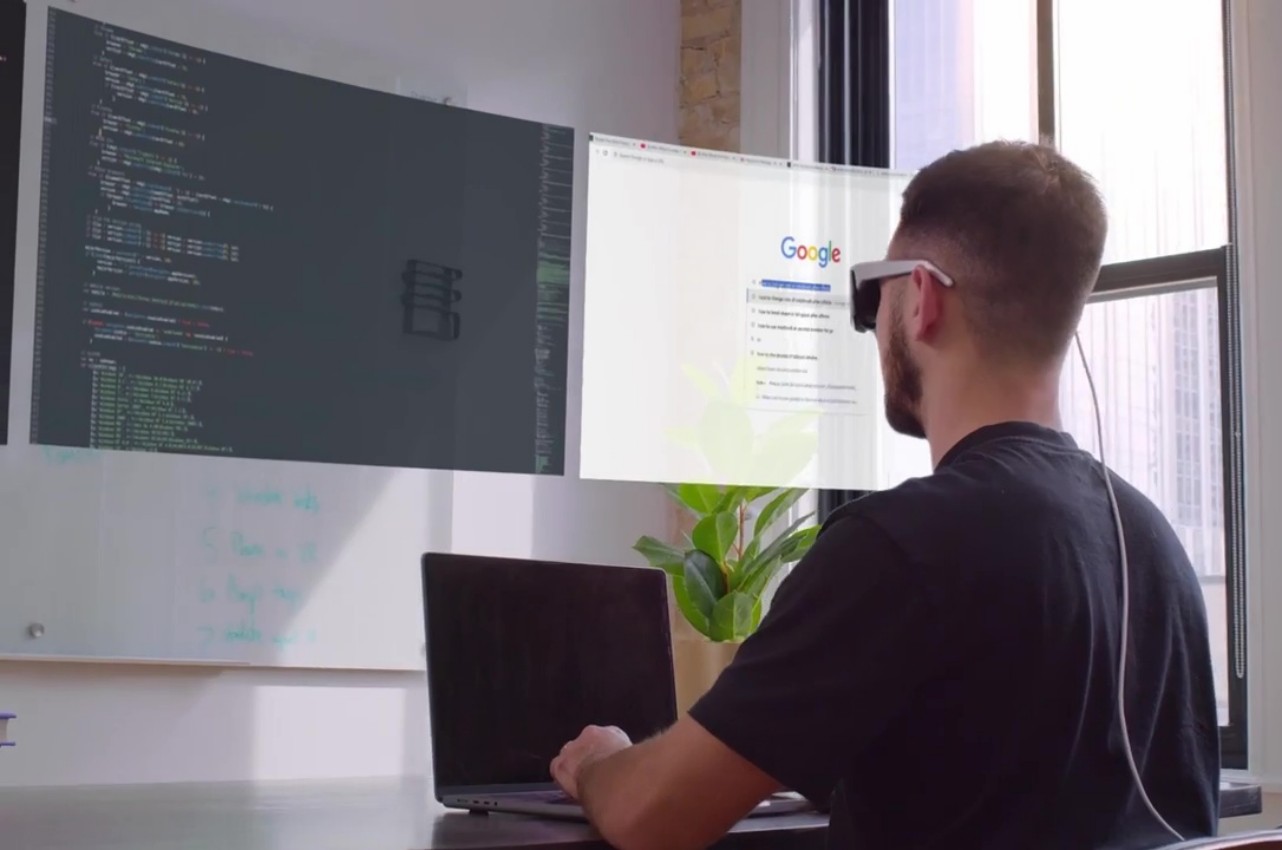
What this means in practice is that you can keep on using the software and operating system you’re already familiar with without any limitations. In fact, Immersed says it won’t even block attempts to make SteamVR work with its device, even though its focus is more towards productivity and professional use. Visor doesn’t even have an app marketplace, but it will release development tools for sideloading apps later on.
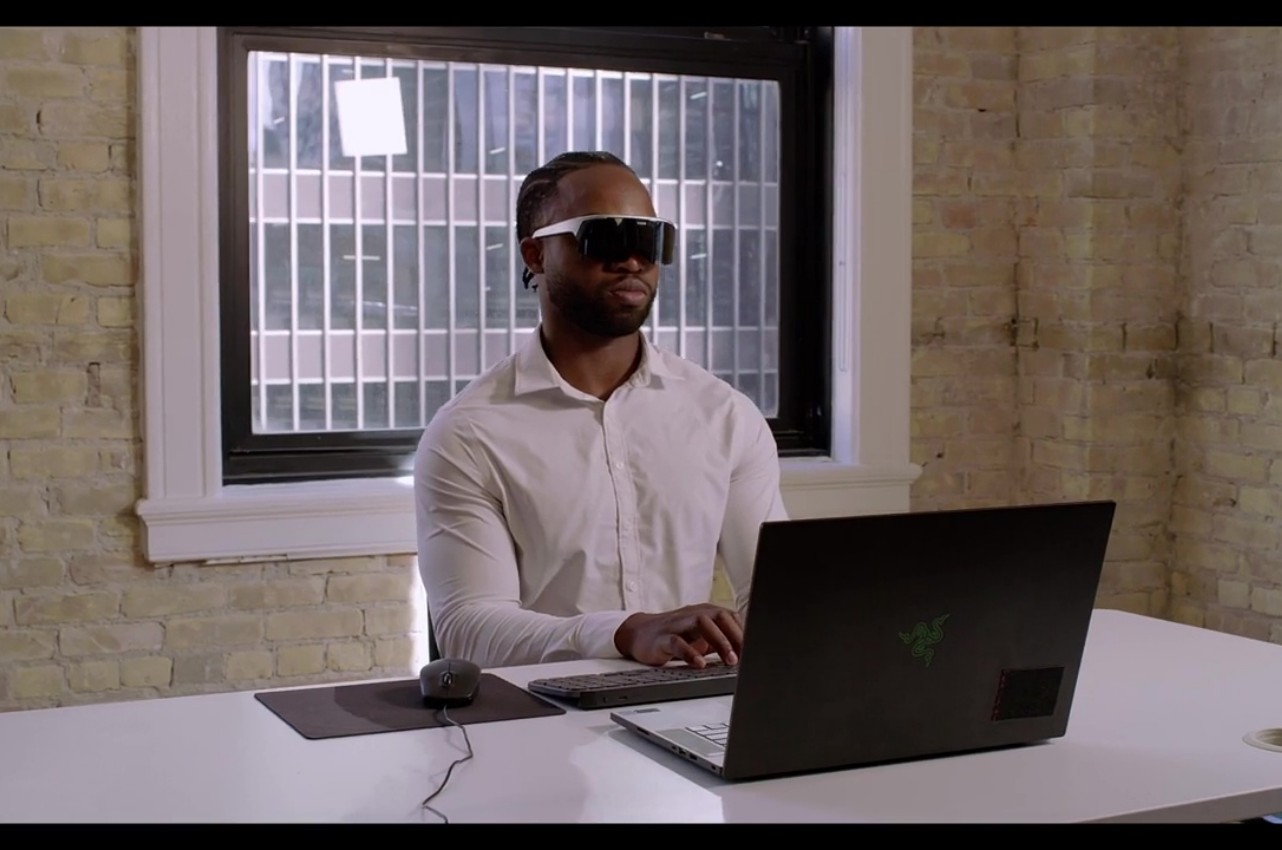
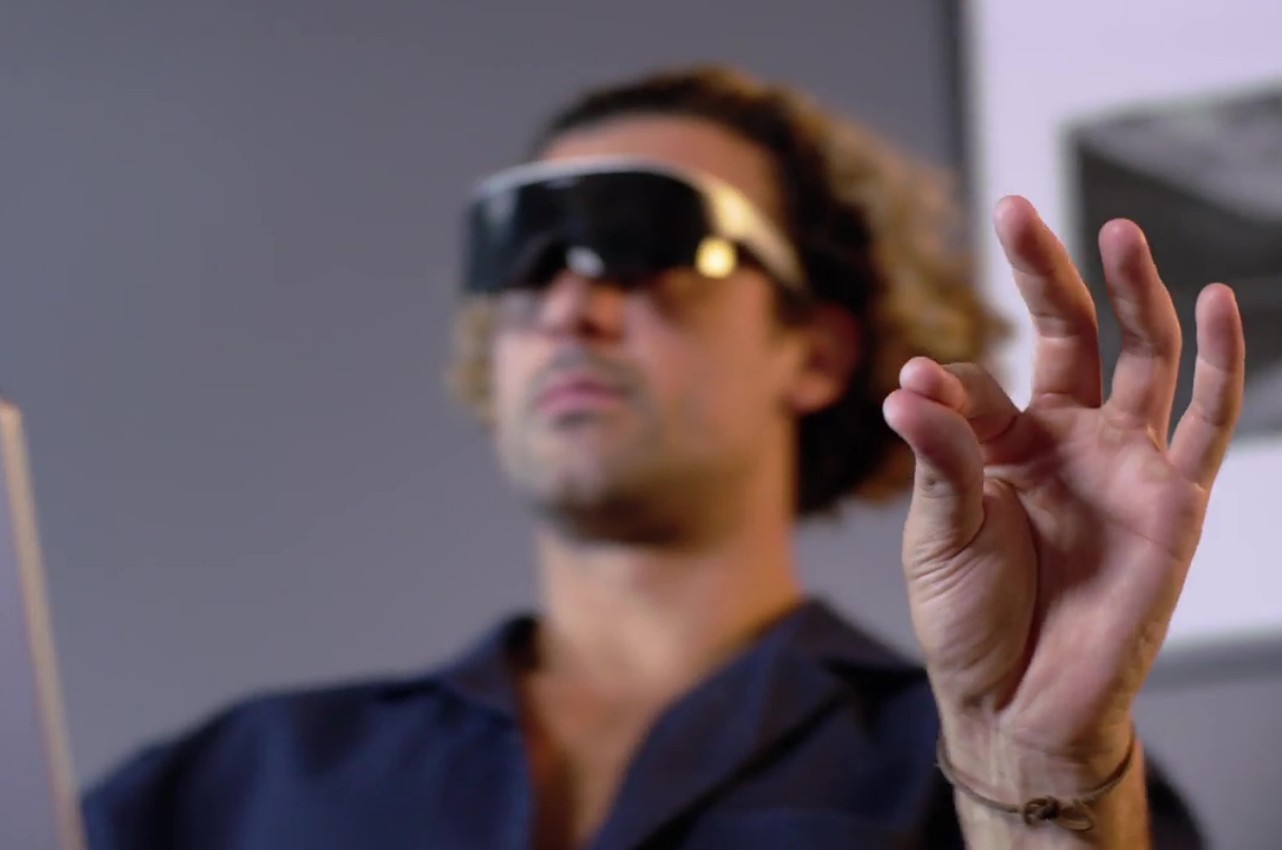
If Visor’s $399.99 price tag sounds too good to be true, that’s because it somewhat is. That cheap figure actually requires you to also buy a “Membership Plus” subscription that will cost $59.99 a month for 12 months or $39.99 for 24 months. The good news is that you won’t lose access to the basic features of the device if you decide not to renew after that period. Alternatively, you can buy the device alone for a full $999.99, without any of the extras, which is still a lot cheaper than the Apple Vision Pro. Whether it can deliver all these promises, however, is something we’ll have to see in due time, no pun intended.
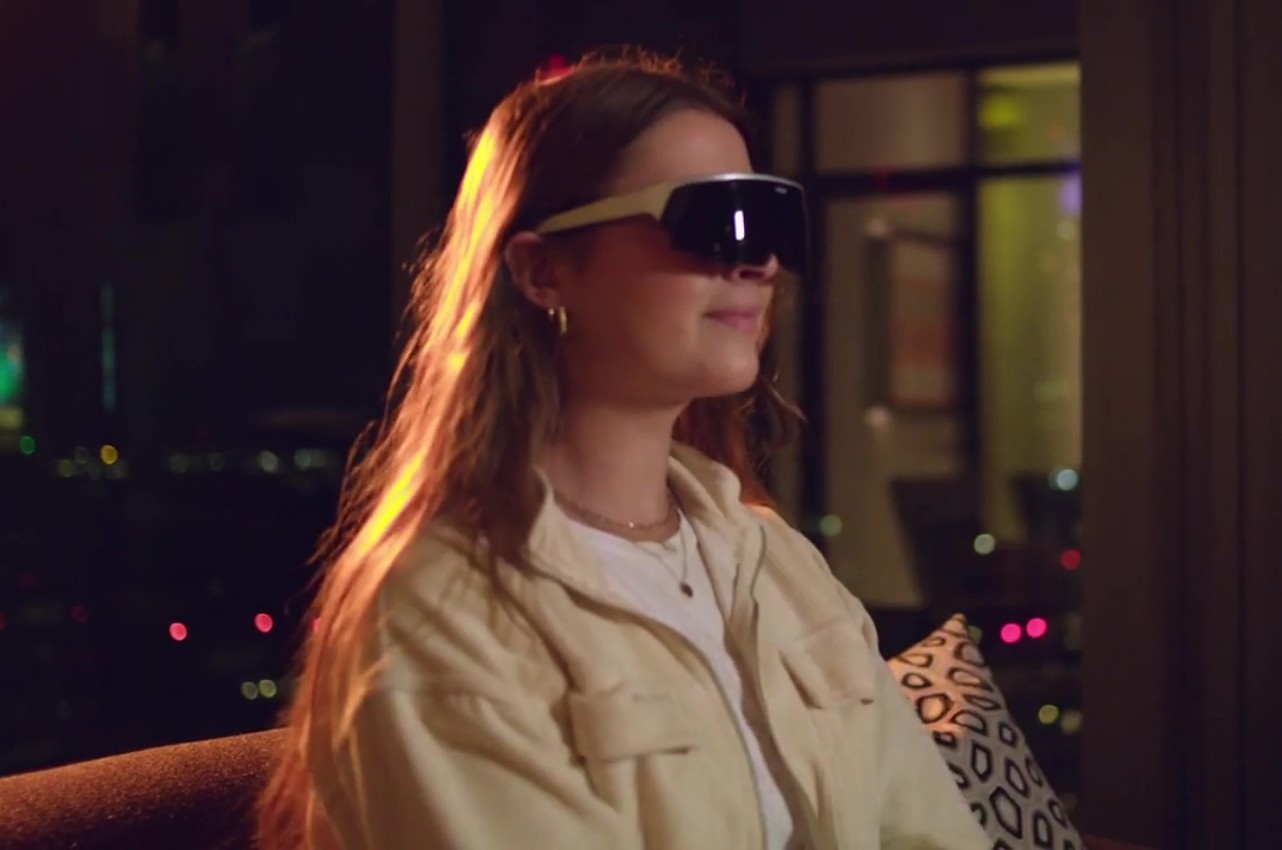
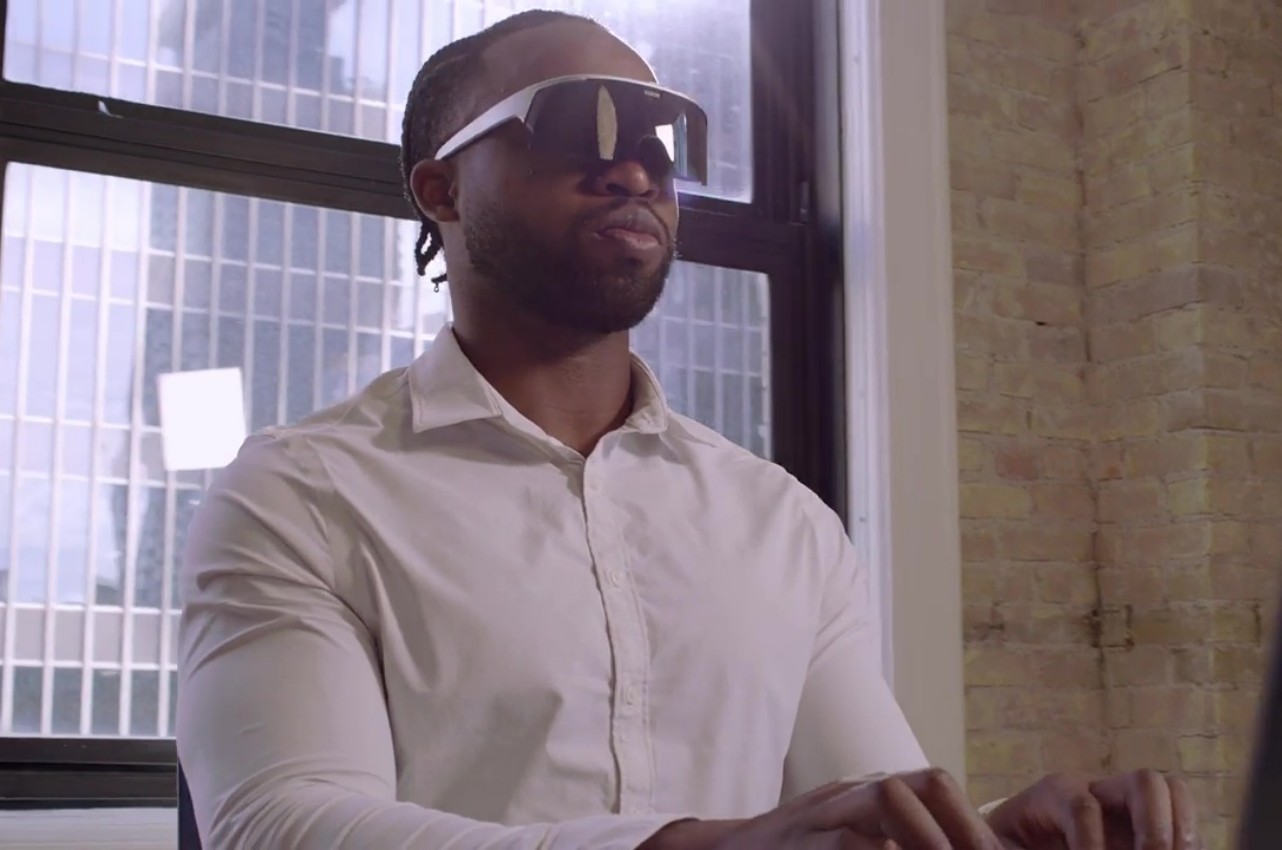
The post Visor mixed reality headset promises a more accessible Apple Vision Pro first appeared on Yanko Design.

If you’re one of those that are excited for the upcoming mixed reality headset from Apple called Vision Pro, you’ll be pleased to know that they have won 70 more design patents that may be used as official accessories. With the headset set to make its debut in early 2024, those who will be early adapters are also looking at what else they can add to enhance the experience of using it. And if you like protecting your gadgets, they may be releasing an official cover for it too.
Designer: Apple

One of the patents that Apple has reportedly won is a cover for their upcoming “spatial computing” device. It uses a soft-touch woven fabric material and is designed to fit in with the device design-wise so that it won’t be too bulky or too out of place. The main function is for it to protect the most vulnerable parts of the gear. It will help you avoid scratches and debris in the front and sides of your headset but it also leaves the back part and the Light Seal clear so it won’t interfere with your viewing and computing experience.
The cover will be able to make sure the EyeSight display will be protected while not hindering the user from actually seeing what needs to be seen. There is also a tab on the left side which will make it easy to remove it in case you don’t need the cover while using the headset. Based on some product renders, the cover does seem to be integrated well into the Vision Pro and maybe even making it cooler.

We can expect a slew of accessories for the upcoming Apple device that should make AR and VR more accessible and usable for the average person. Whether they’re “official” ones from Apple or from popular third-party accessory brands like CASETiFY, expect to be flooded with these add-ons even before you decide whether you’re getting a Vision Pro or not.
The post Apple Vision Pro first accessory might be a protective cover first appeared on Yanko Design.
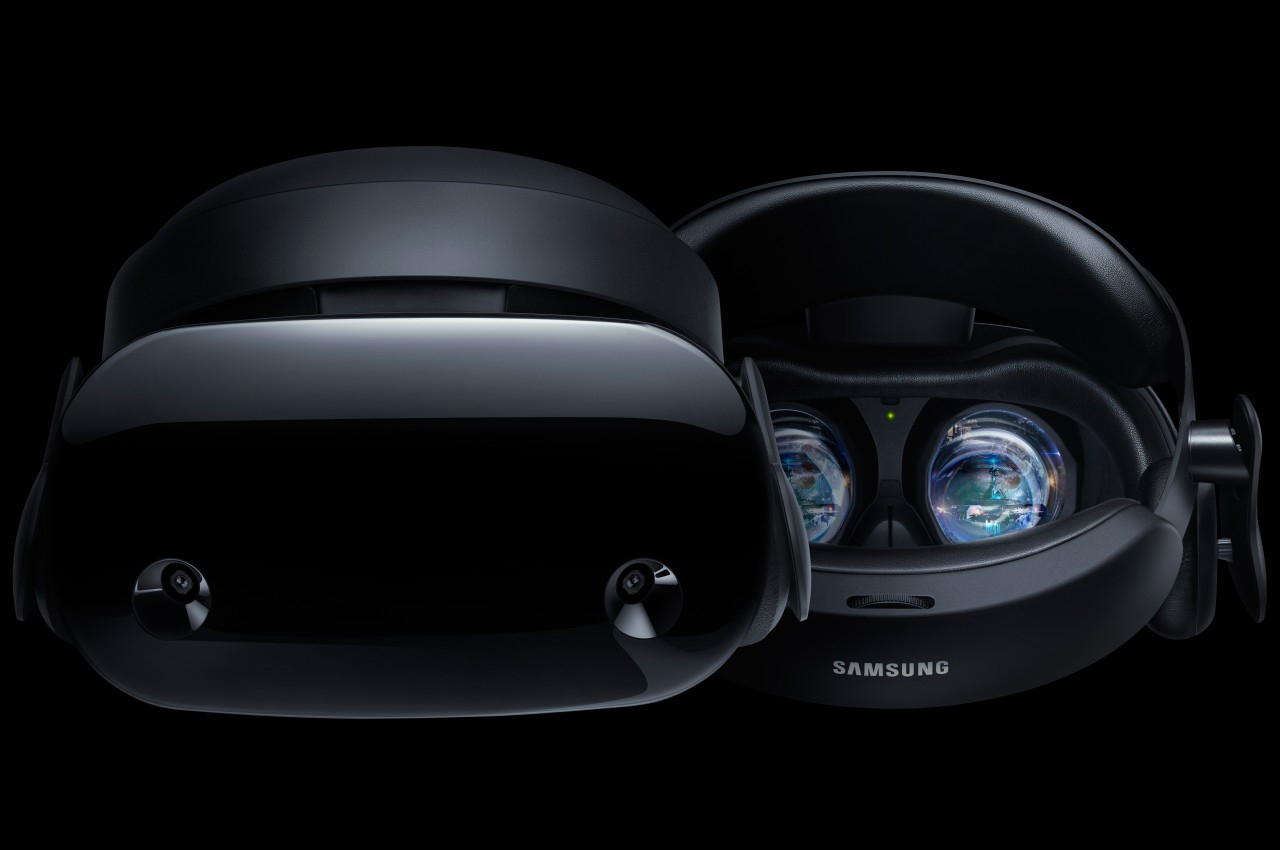
Although it was a bit late to the game, it was unsurprising that the Apple Vision Pro mixed reality headset blew people’s minds the moment Apple officially revealed its existence and features. It has definitely caused many players in the market to rethink their designs and strategies, including Samsung who was supposedly close to announcing its own XR or eXtended reality hardware. The initial expectations were along the lines of a full headset not unlike the (Facebook) Meta Quest 3 or Samsung’s own defunct HMD Odyssey, but it seems that Samsung was “inspired” by its biggest rival to go back to the drawing board. While still largely a mystery, some of the pieces are falling into place, laying the foundations for what will soon be called Samsung Glasses.
Designer: Samsung
There is still some debate on what specific area of the umbrella eXtended Reality (XR) space Samsung’s headset will be aiming for. Based on a recently leaked prototype, it would have leaned more on the virtual reality side of the equation, with outward-facing cameras to allow wearers to see a glimpse of the world outside. This is the conventional HMD or Head-Mounted Device design and something Samsung is already familiar with. But with rumors of Samsung reviewing the device in lieu of the Apple Vision Pro, you can expect some big changes in terms of design.
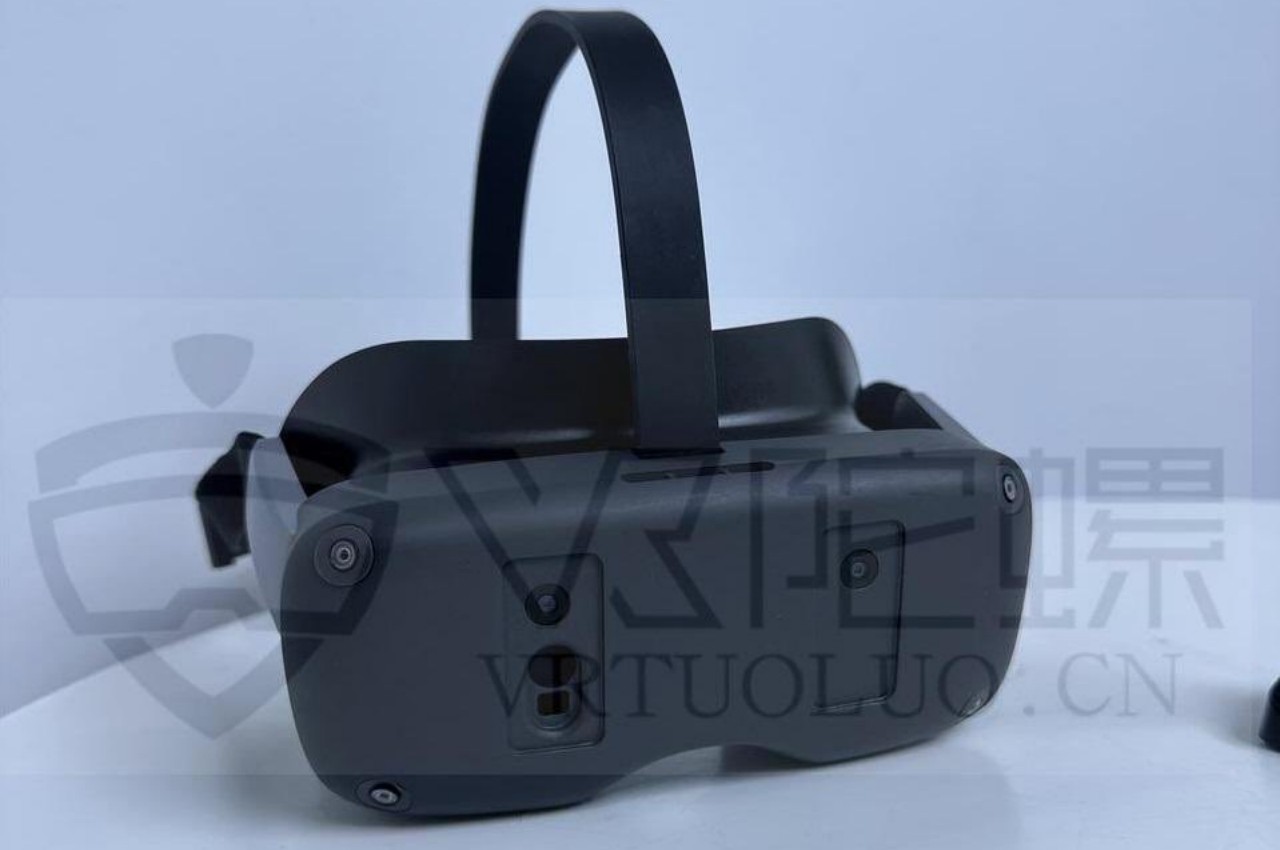
Image courtesy of Brad Lynch
A recent trademark filing in the UK reveals that Samsung is calling dibs on the “Samsung Glasses” name. The description, which covers VR, AR, MR, and XR, isn’t exactly telling, but it does suggest it will take on a form closer to smart glasses. Considering the necessary hardware involved, it won’t be something simple like Ray-Bans or Google Glasses, more like, well, the Apple Vision Pro or the Meta Quest Pro. While not completely comfortable or portable, this design at least opens the door to AR and mixed reality more than a typical VR headset.
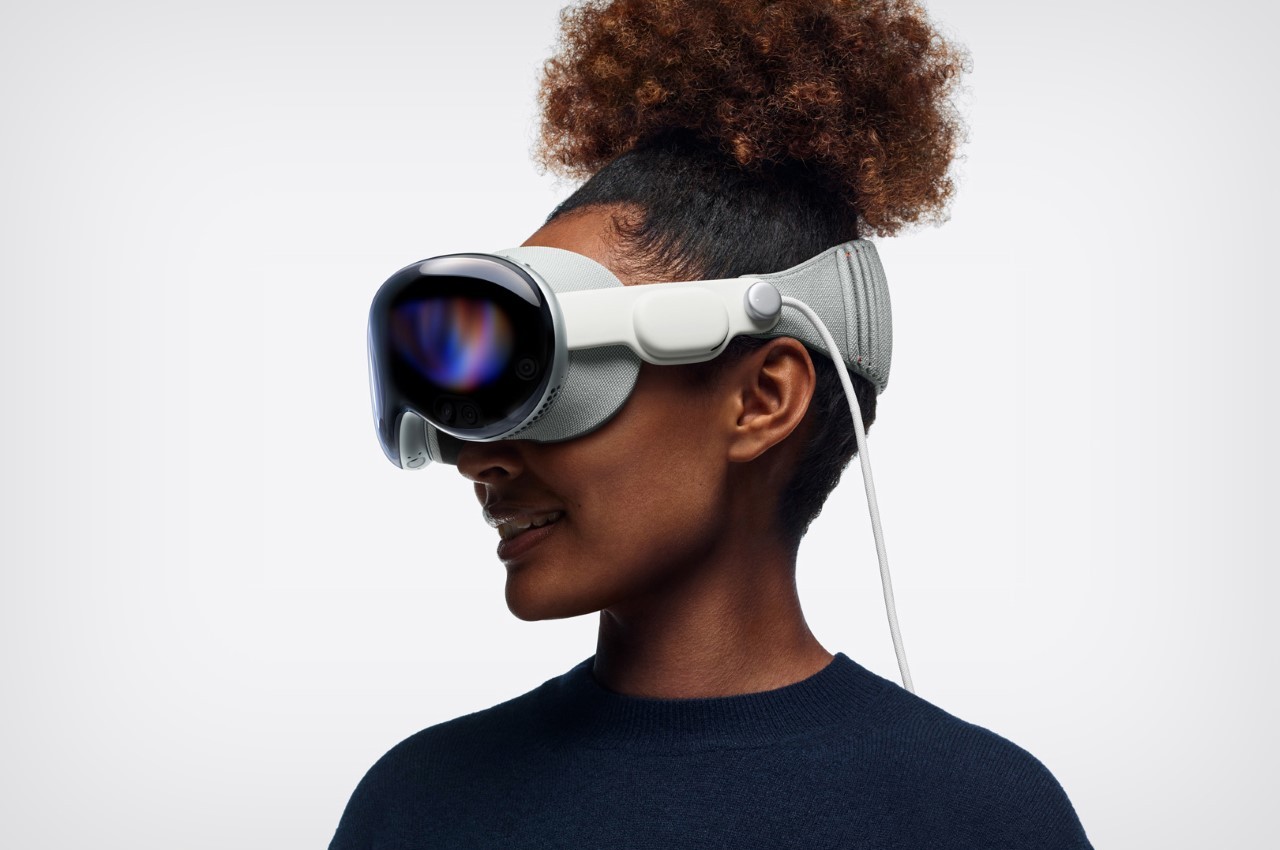
Apple Vision Pro
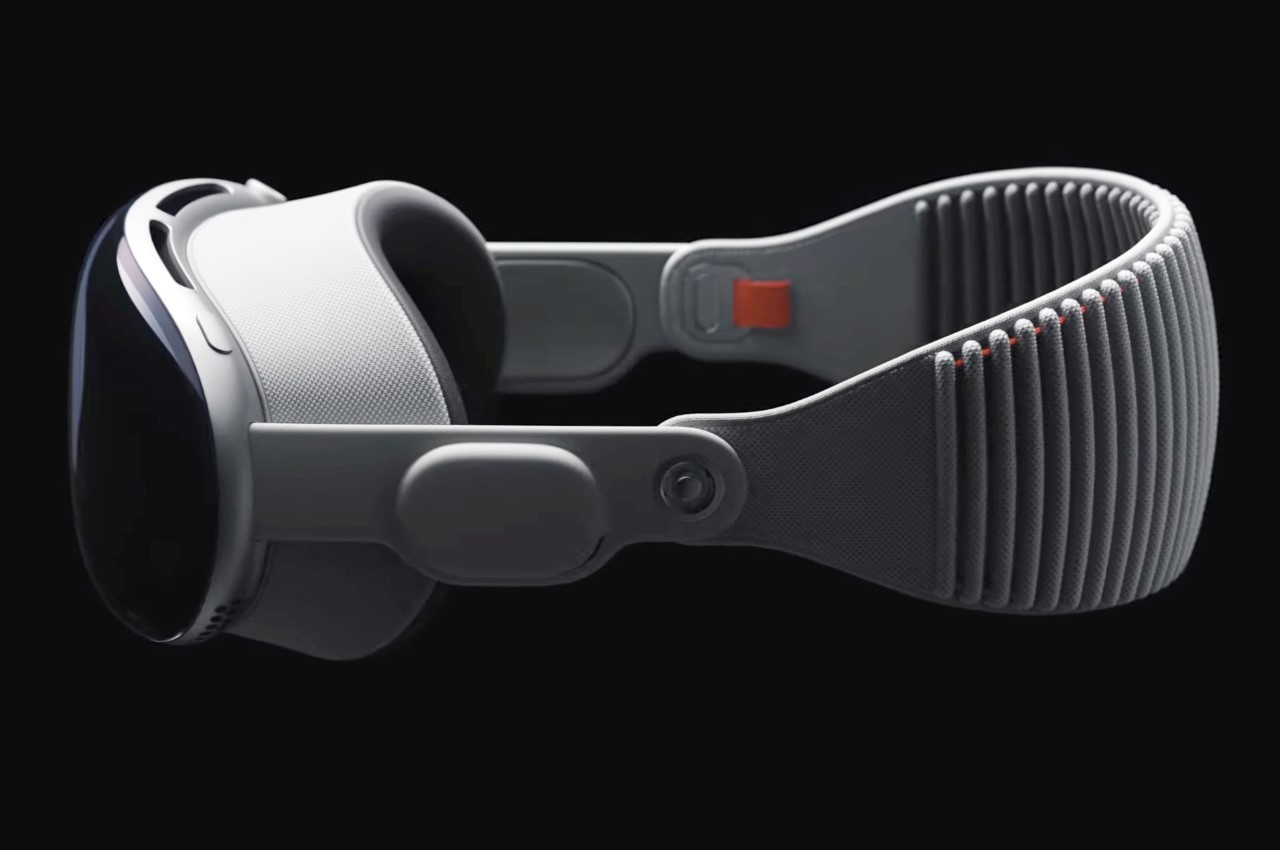
Apple Vision Pro
In addition to the usual processors and electronics needed to drive such a mixed reality headset, Samsung Glasses will succeed or fail depending on the optics it uses. The prototype mentioned above lists micro OLED displays, pancake lenses, and cameras for eye and hand tracking, all of which contribute to a more immersive experience when viewing and manipulating digital objects. Samsung was reportedly planning on using a 2022 processor to power this headset, but Apple’s challenge has it mulling over a more capable chip it could use instead.
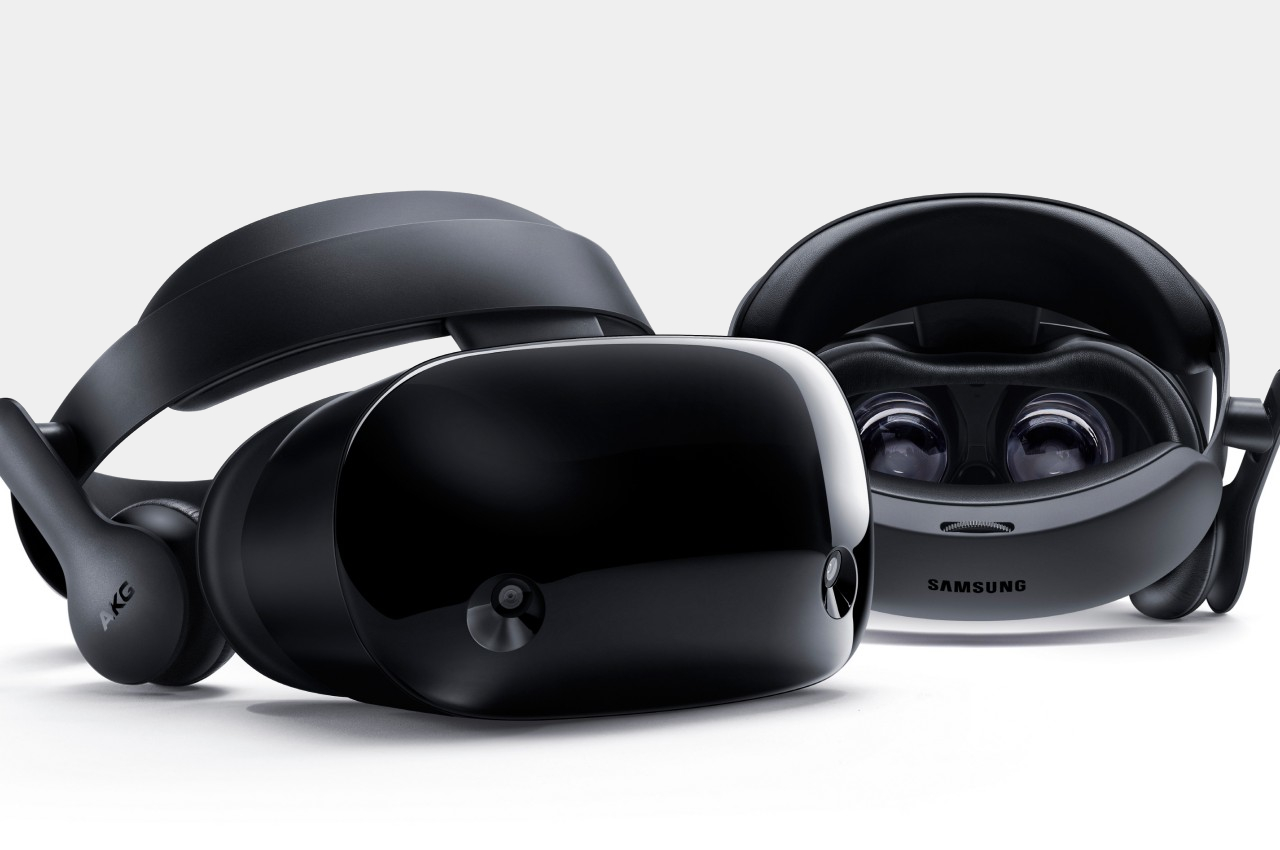
Samsung Odyssey+
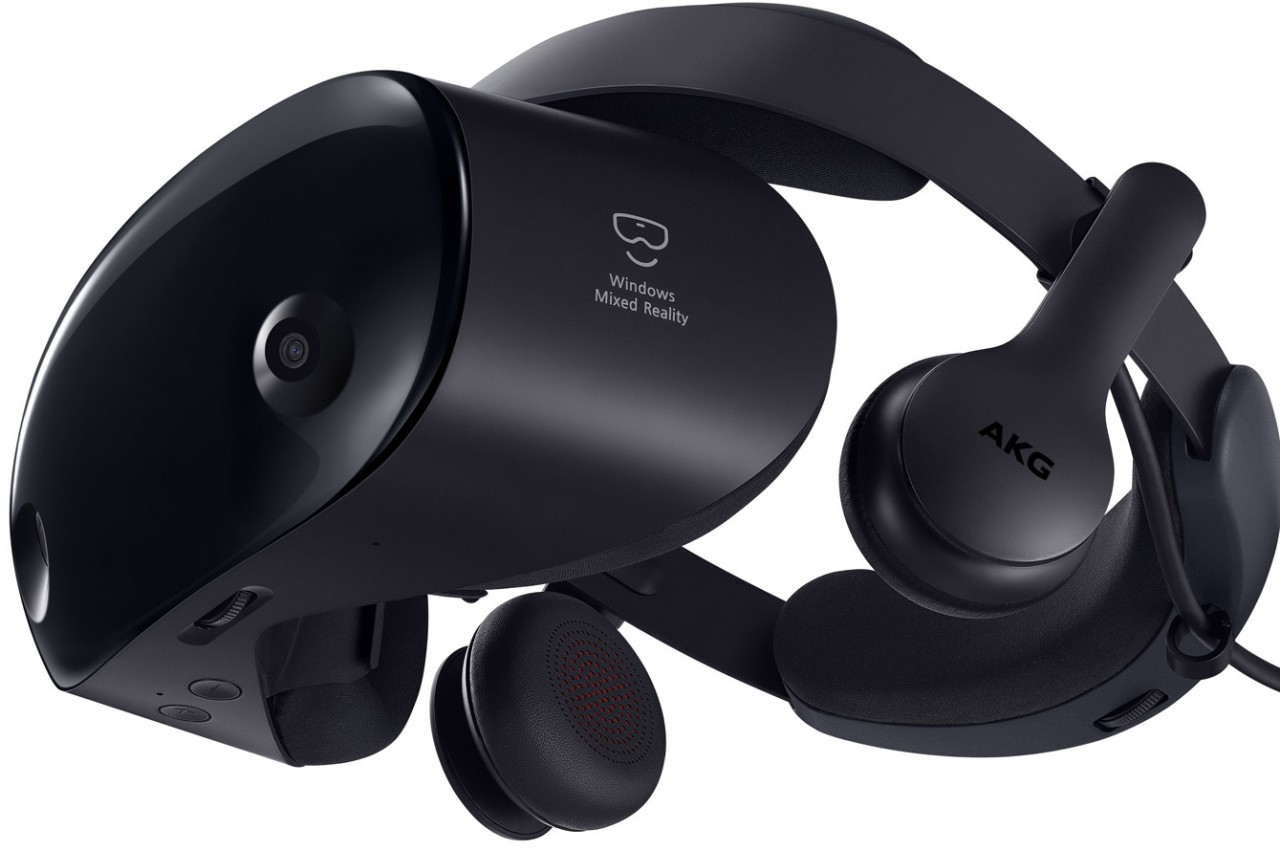
Samsung Odyssey+
One thing that Samsung might be doing differently from Apple is having the battery built into the headset, though mounted on the rear rather than the front. While this naturally adds to the weight of the device, its location attempts to at least balance the load on both sides. It also makes the Samsung Glasses a bit more portable since it doesn’t have to rely on an external battery connected via a cable.
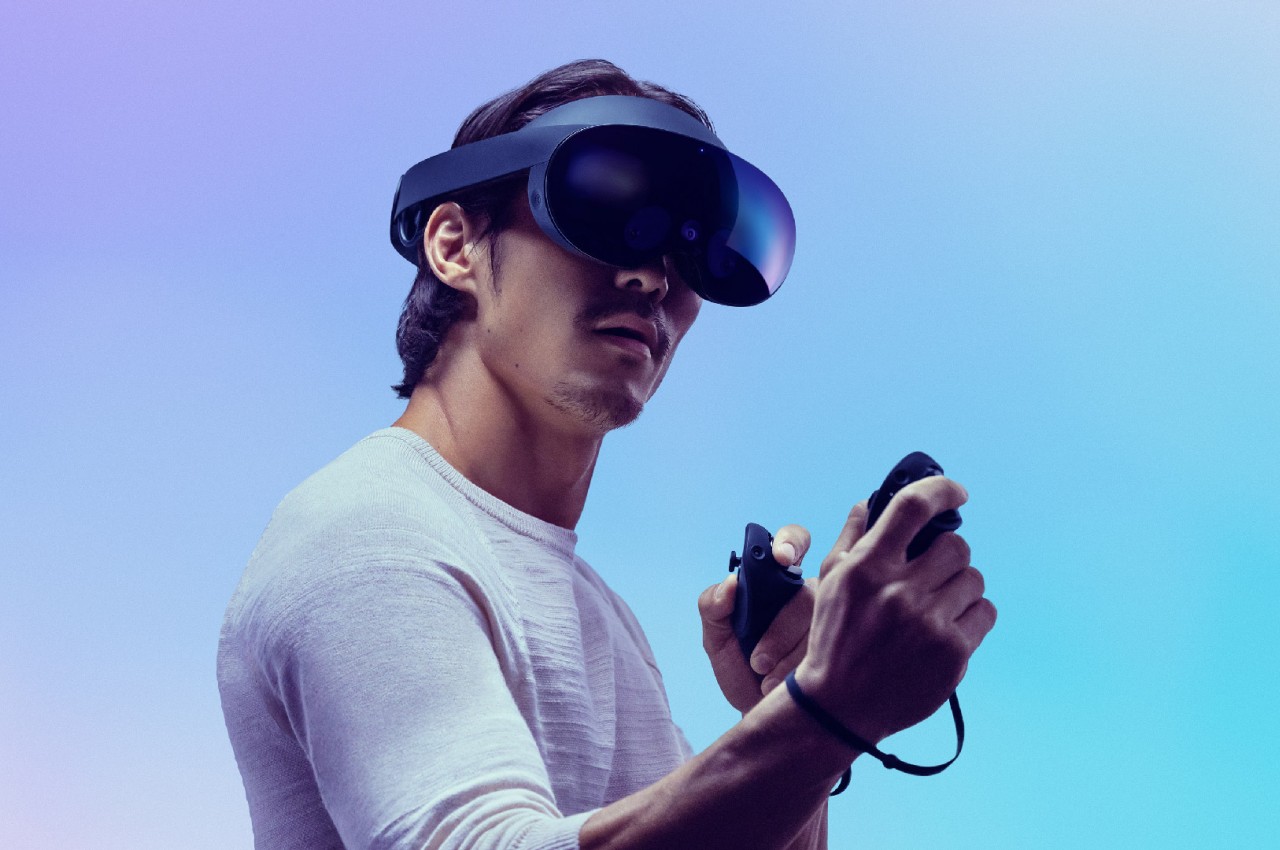
Meta Quest Pro
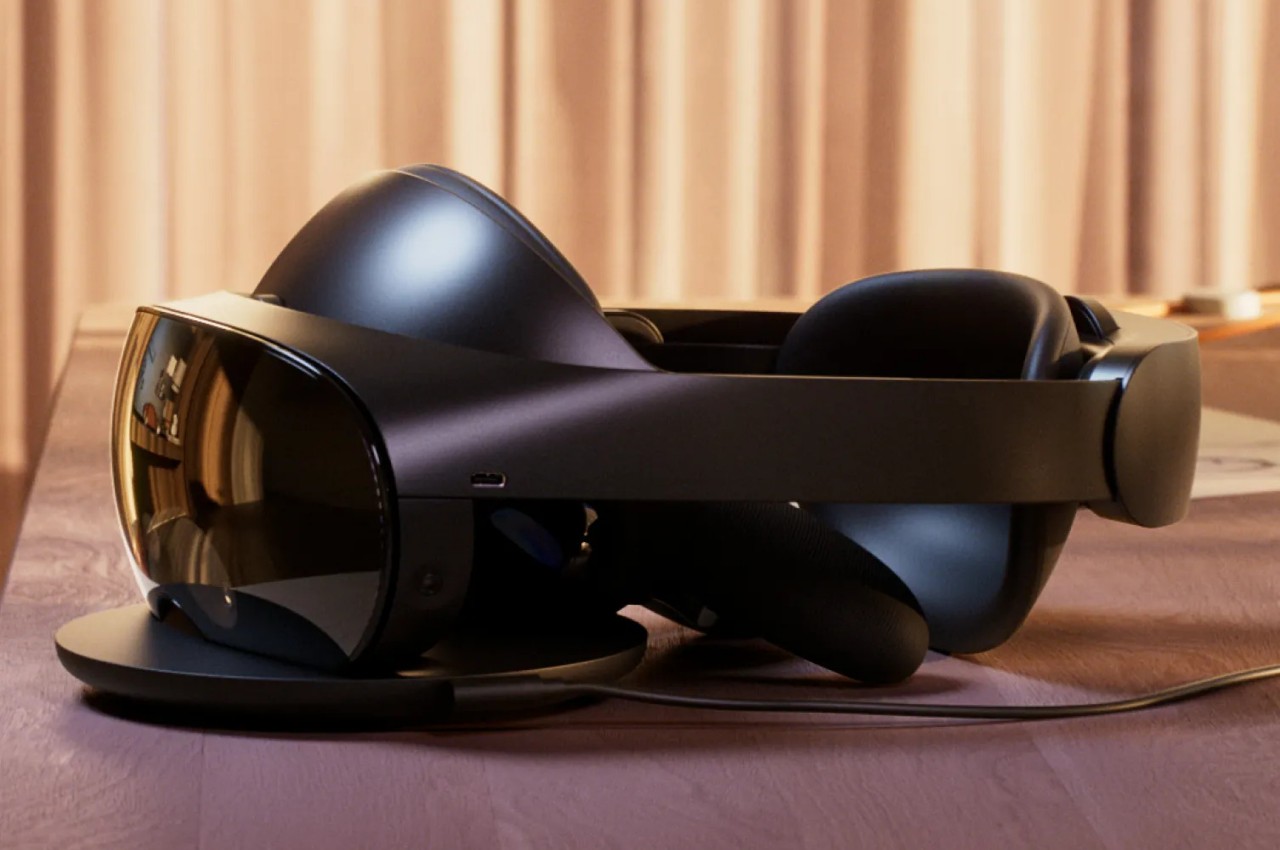
Meta Quest Pro
With the Apple Vision Pro’s market launch nearing, Samsung really doesn’t have much time left to put out its own take on the eXtended Reality space. Insider sources claim that the date has been pushed back to mid-2024, in contrast to Apple’s launch sometime between January and April. That’s not to say that Samsung is taking it slow, as developers are allegedly told to finish their XR apps by November. There will be an internal launch next month, so we might get a few more unofficial sneak peeks of the device.
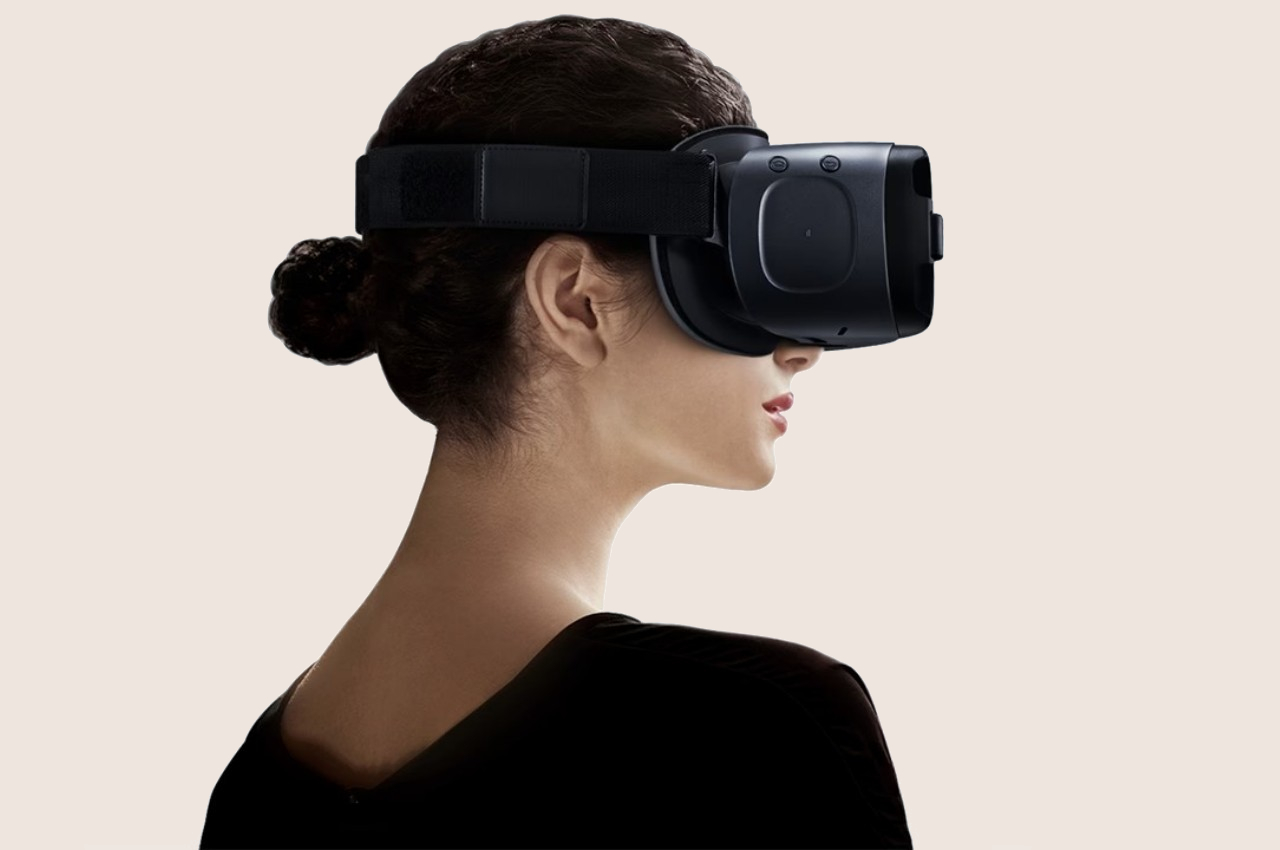
Samsung GearVR
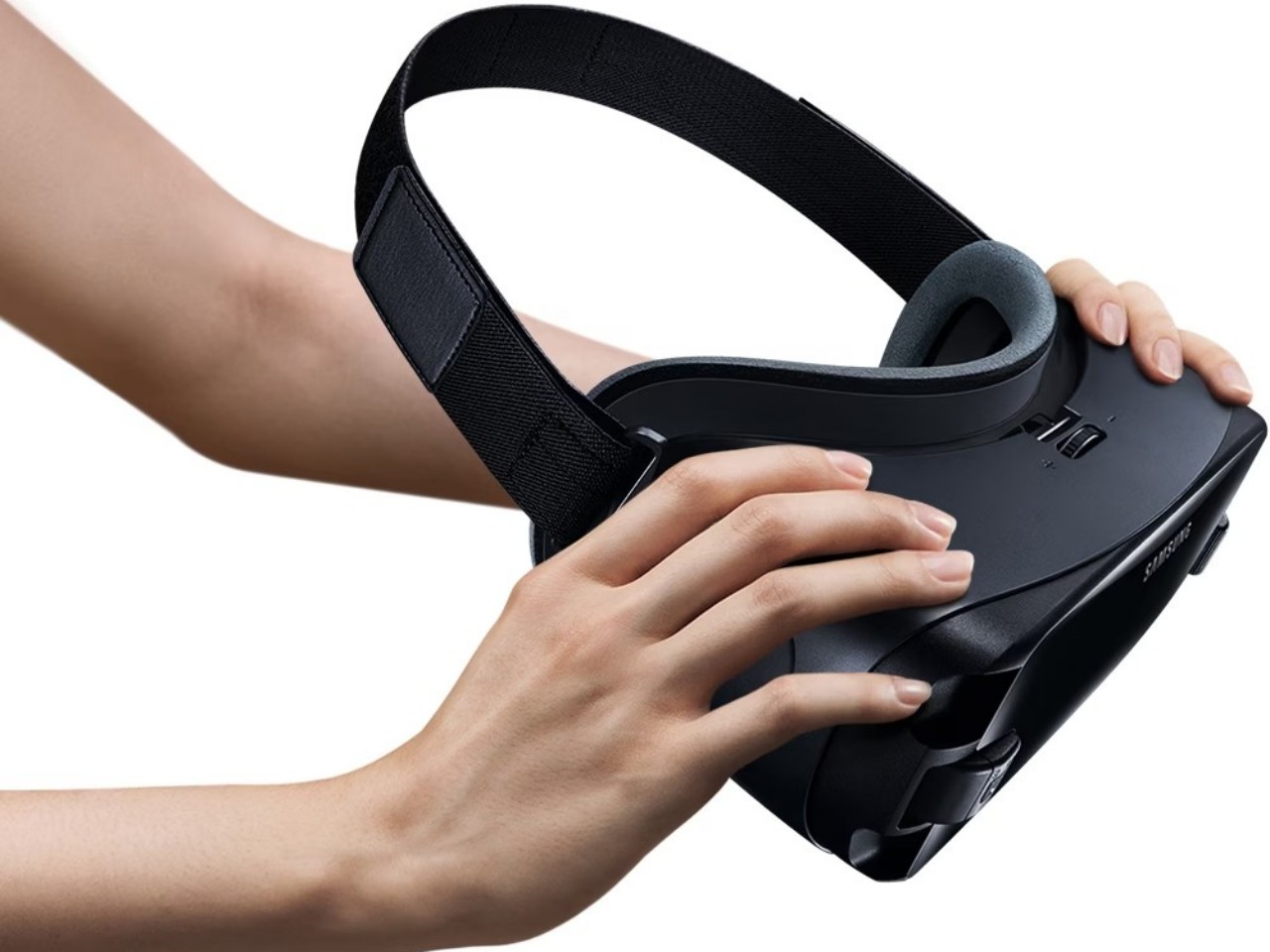
Samsung GearVR
Of course, most of these are still conjectures based on a variety of unofficial sources, so there is still plenty of room to hope for a better device. Conversely, Samsung’s track record with the Gear VR and, later, the HMD Odyssey doesn’t inspire much confidence. The design of the headset is critical for comfort, but it will be the software that will determine whether such a piece of hardware will actually entice buyers in the long run.
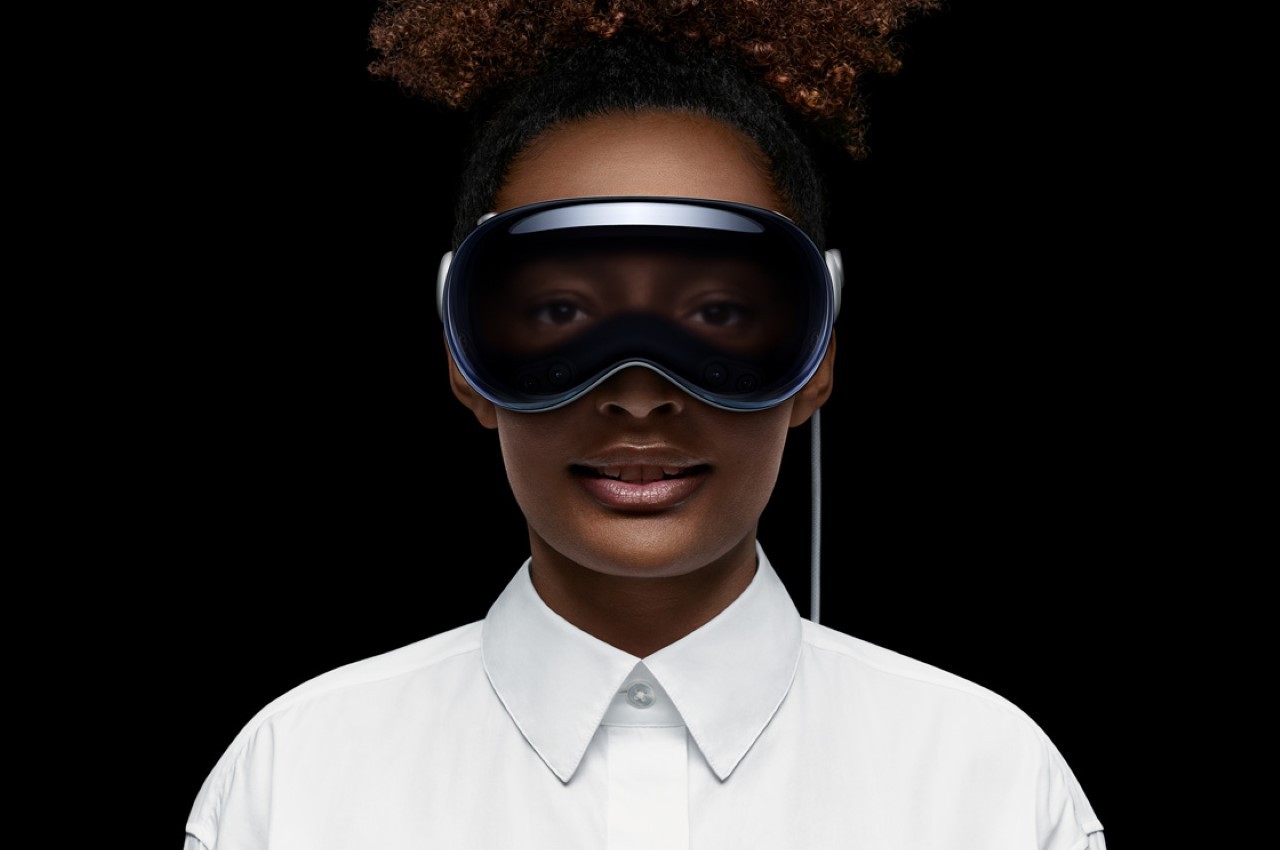
Apple Vision Pro
The post Samsung Glasses Mixed Reality Headset: What We Know So Far first appeared on Yanko Design.